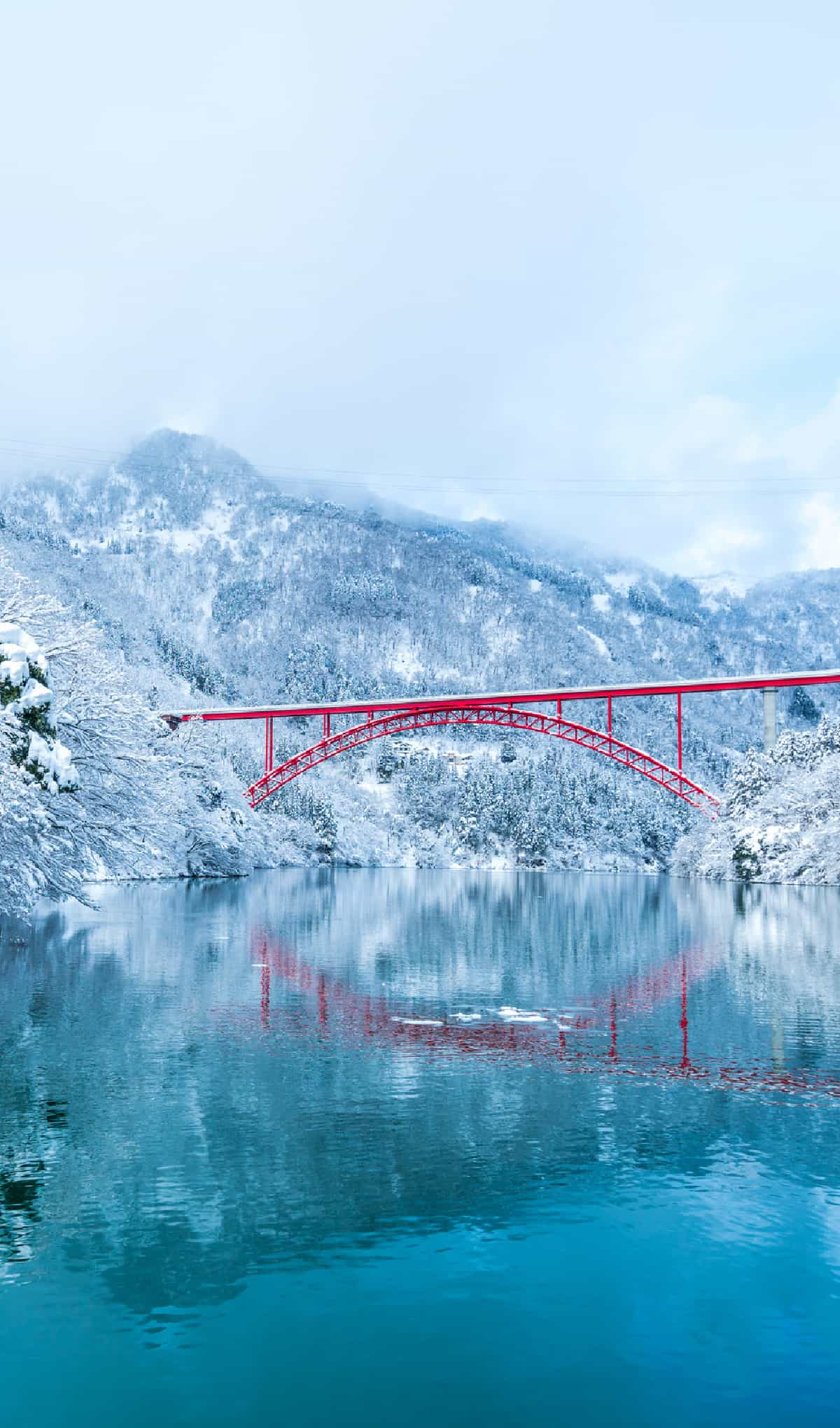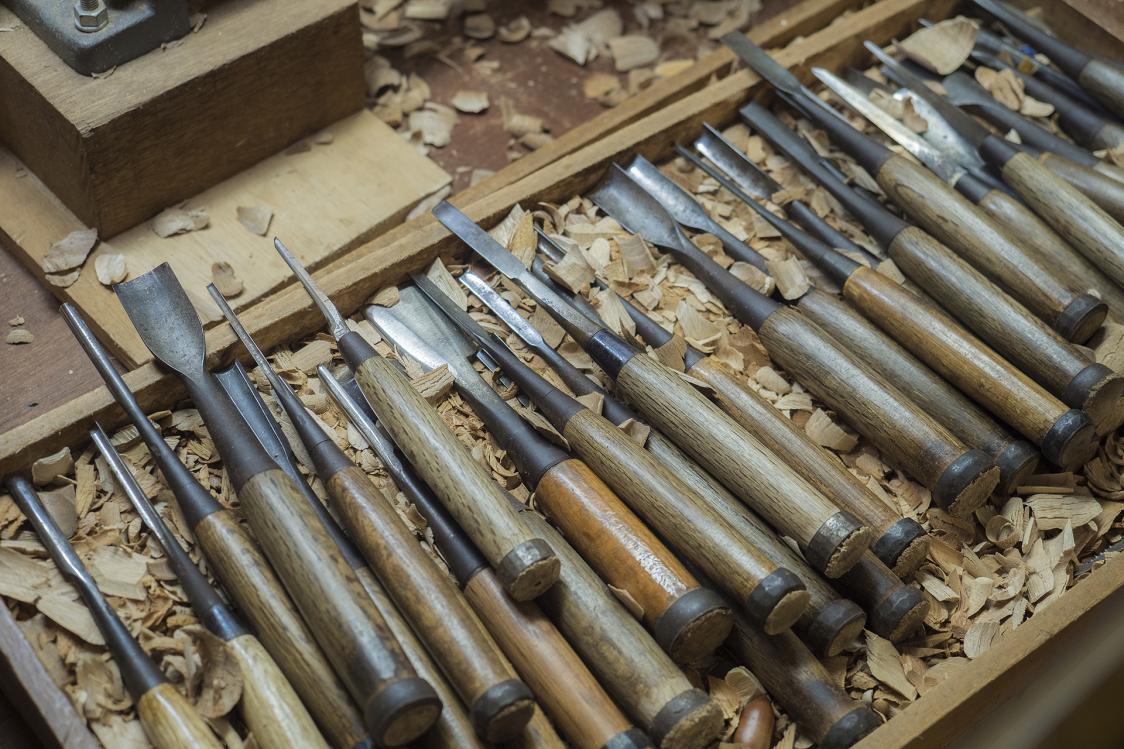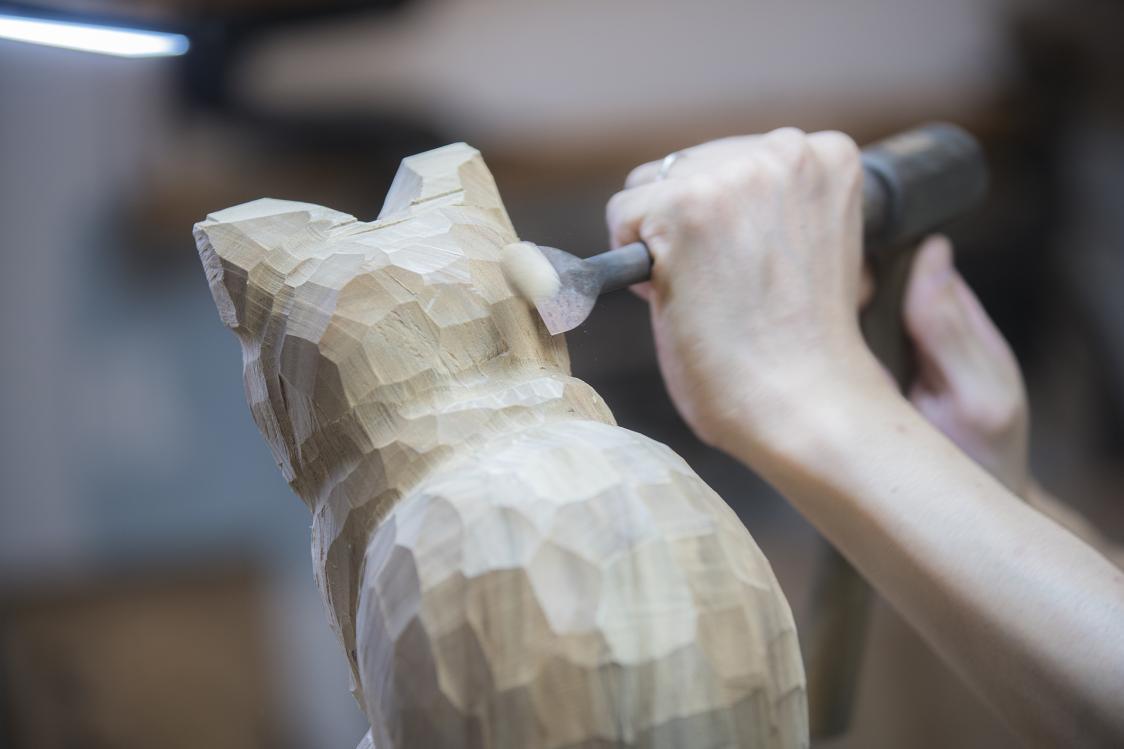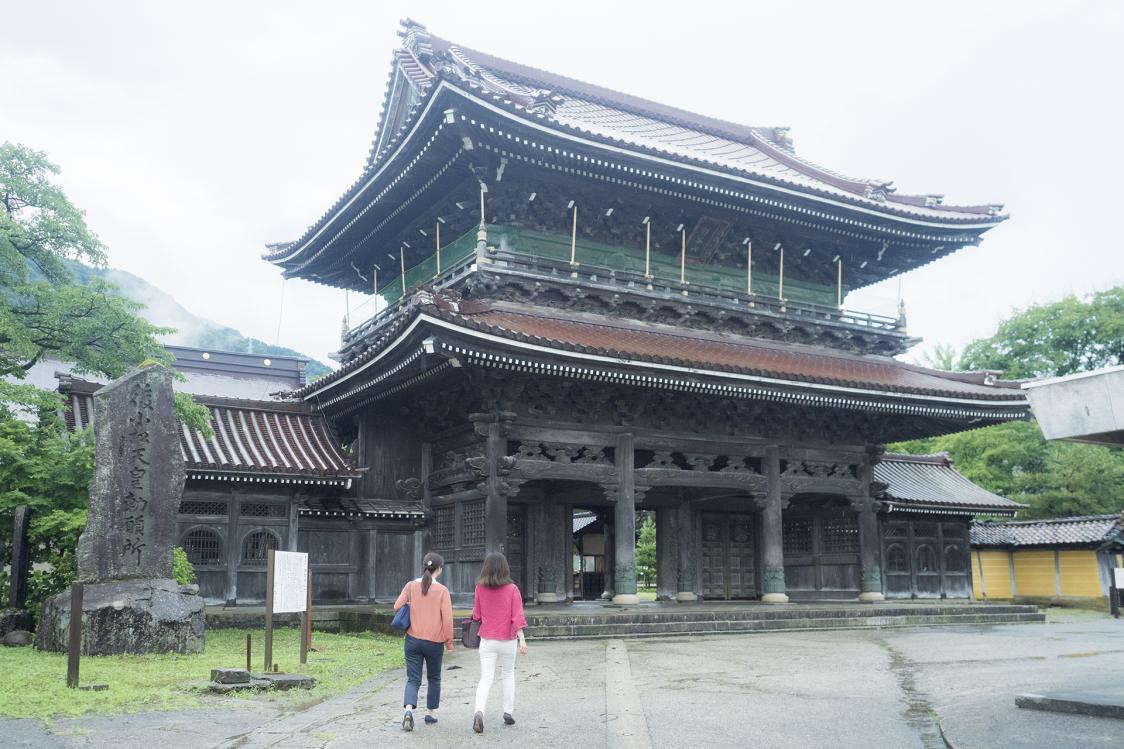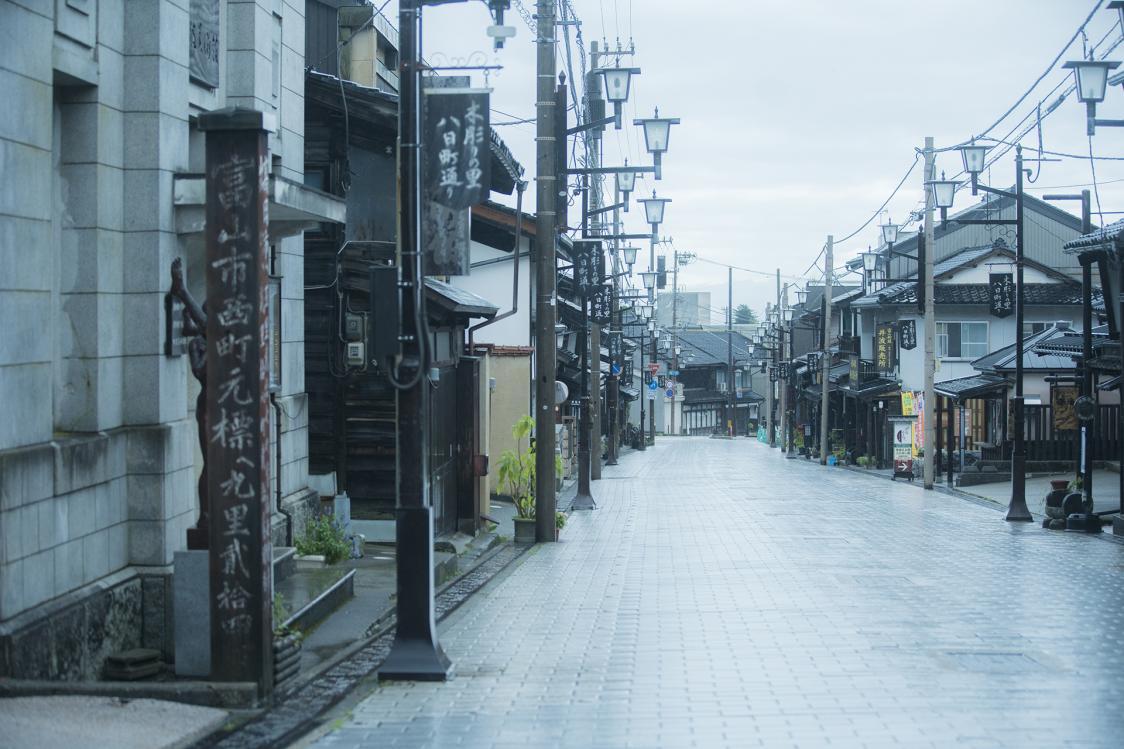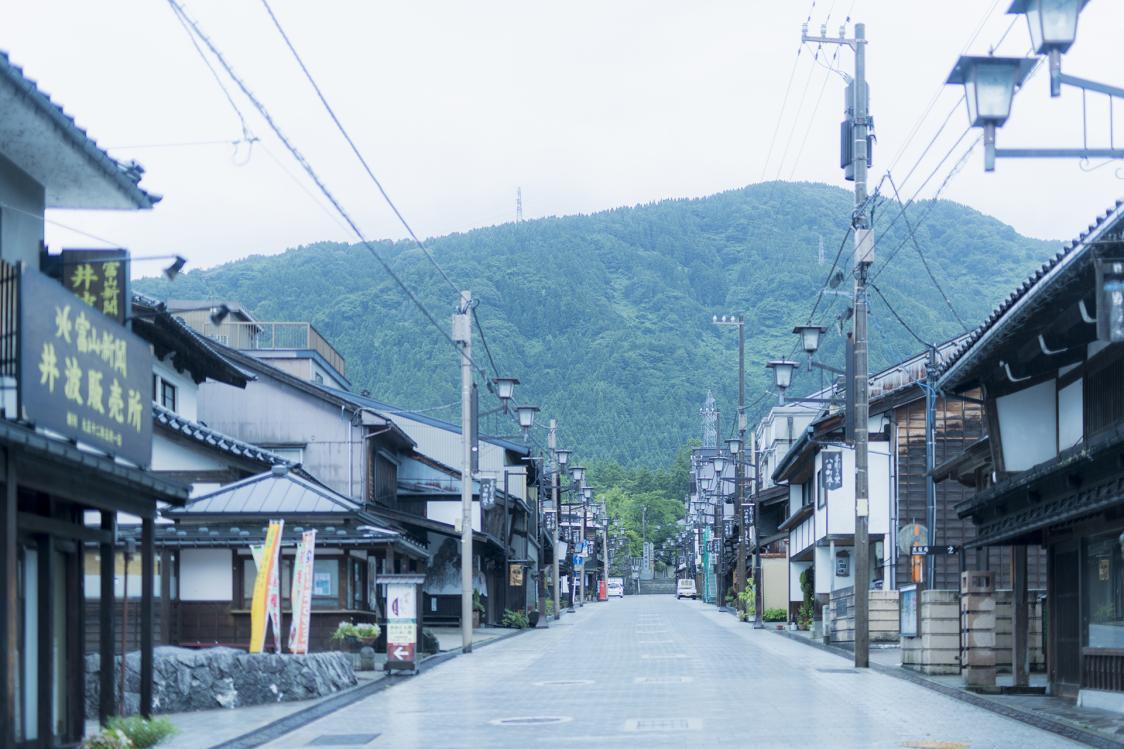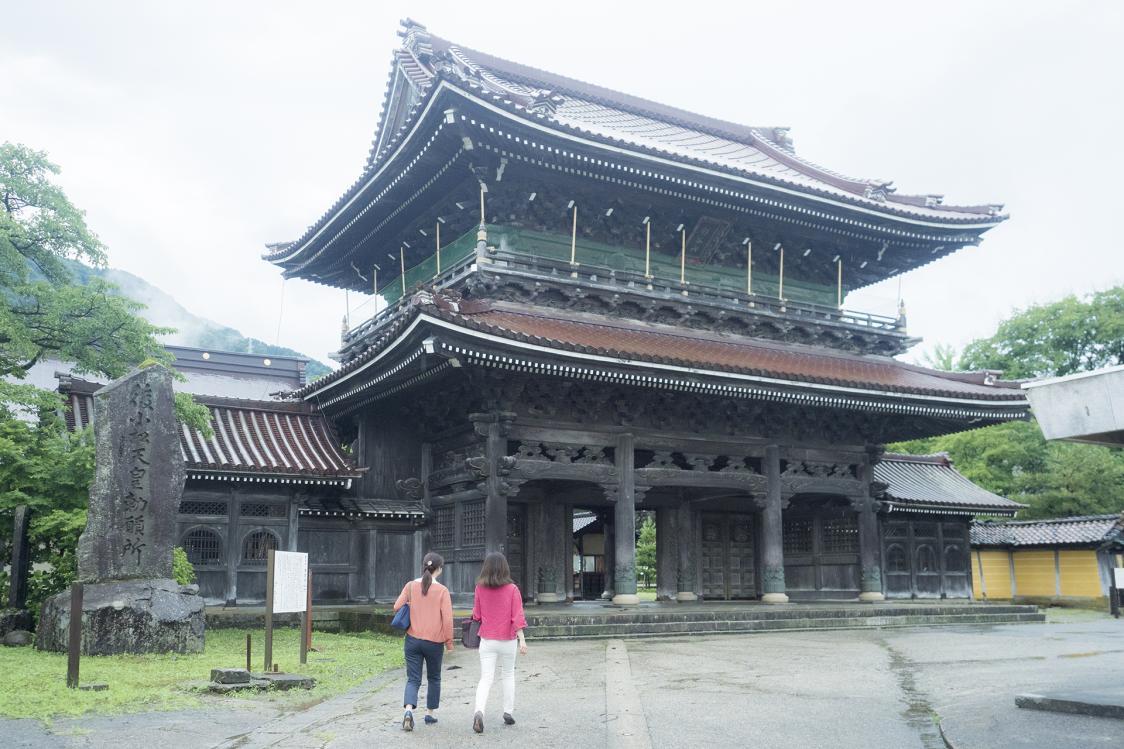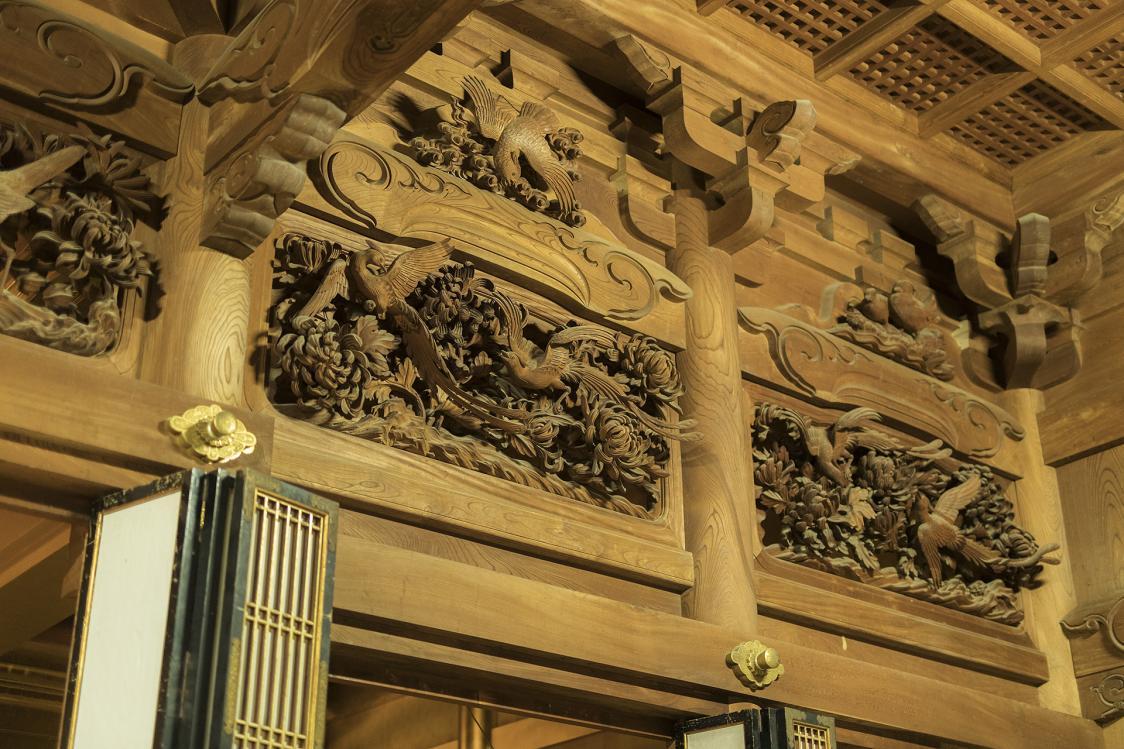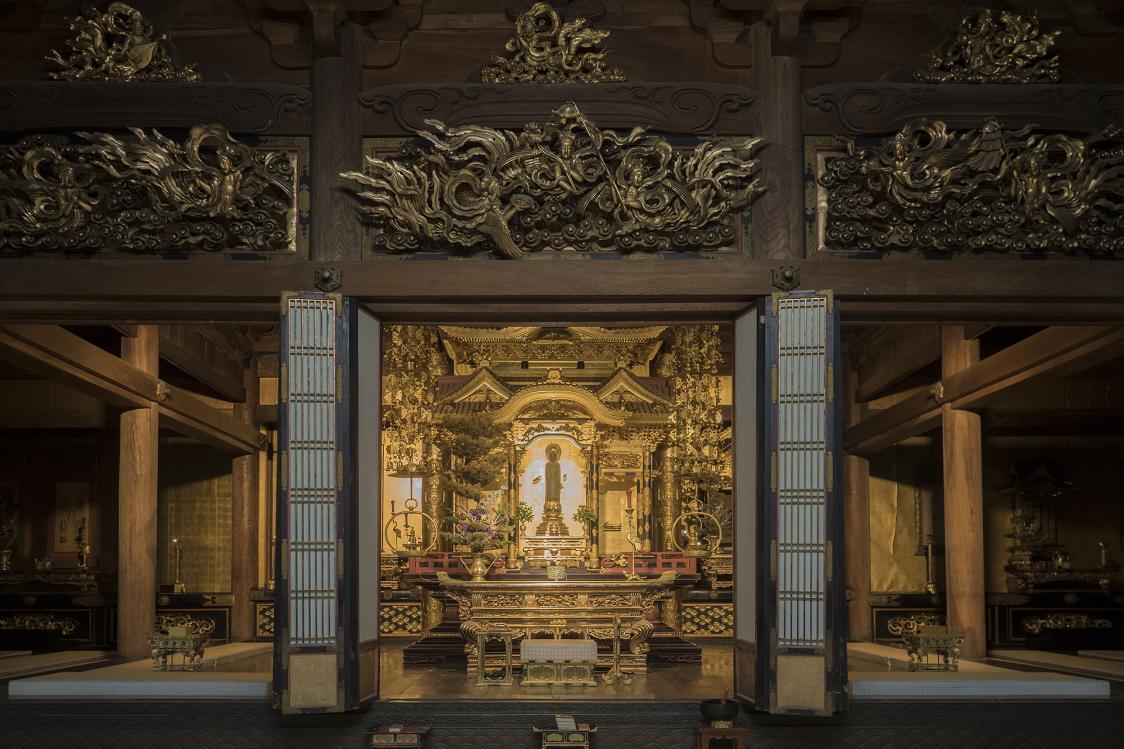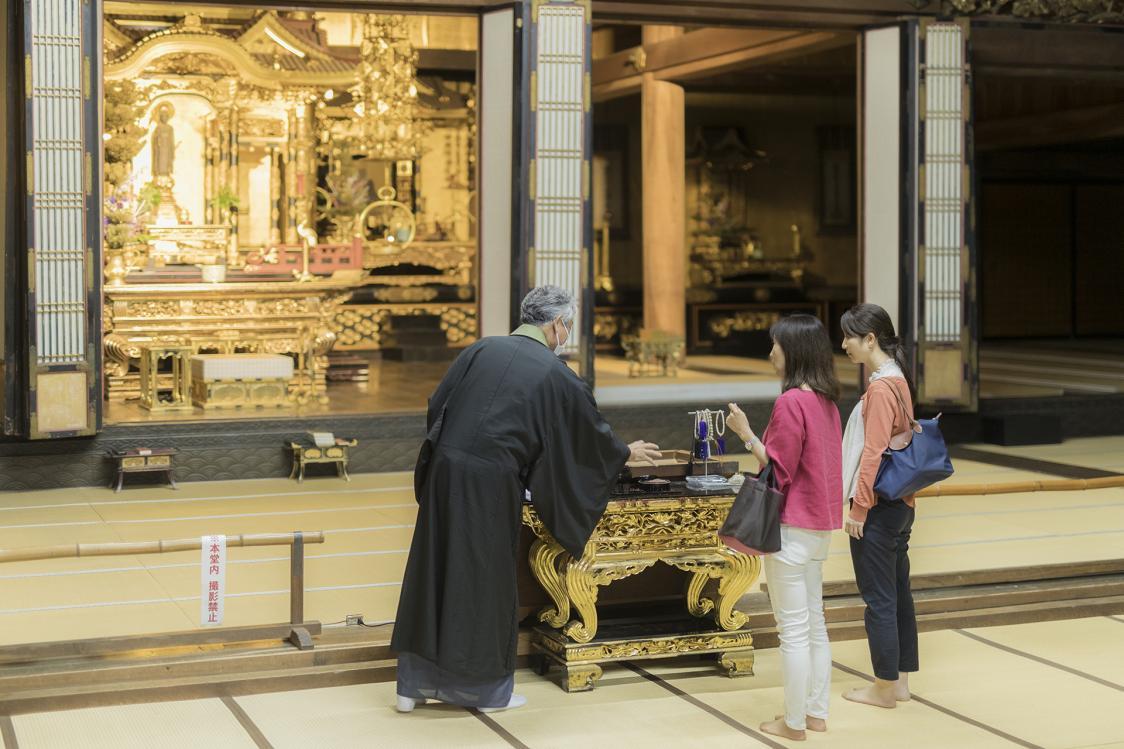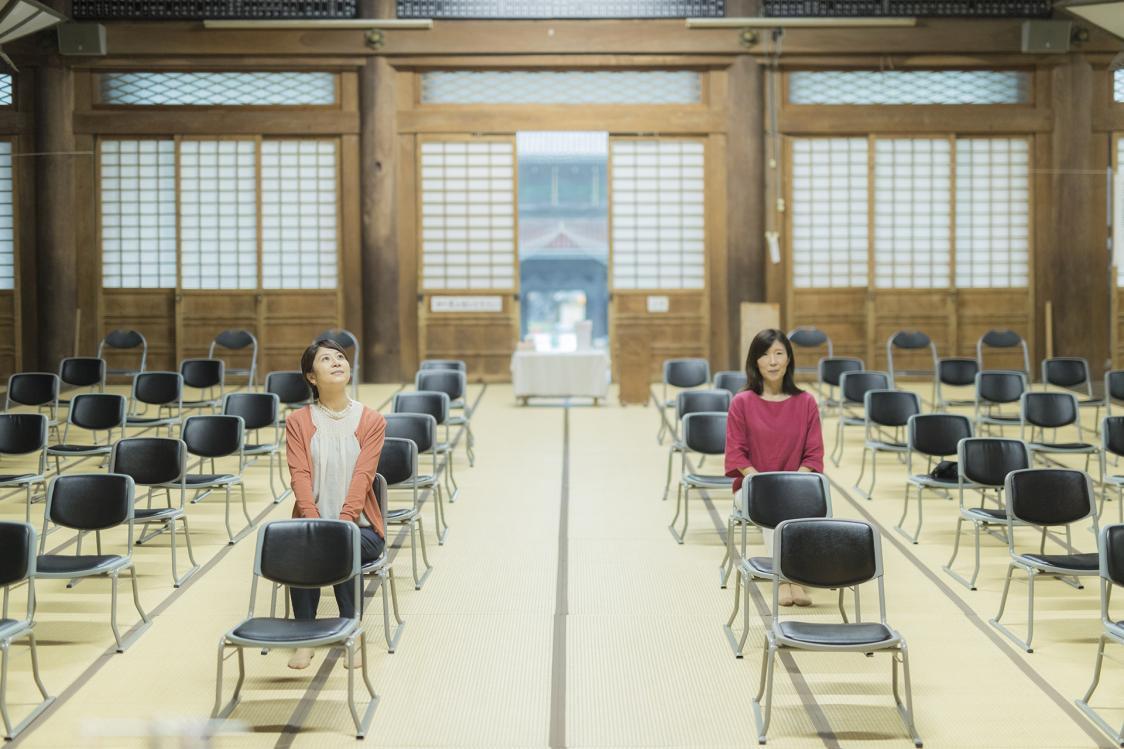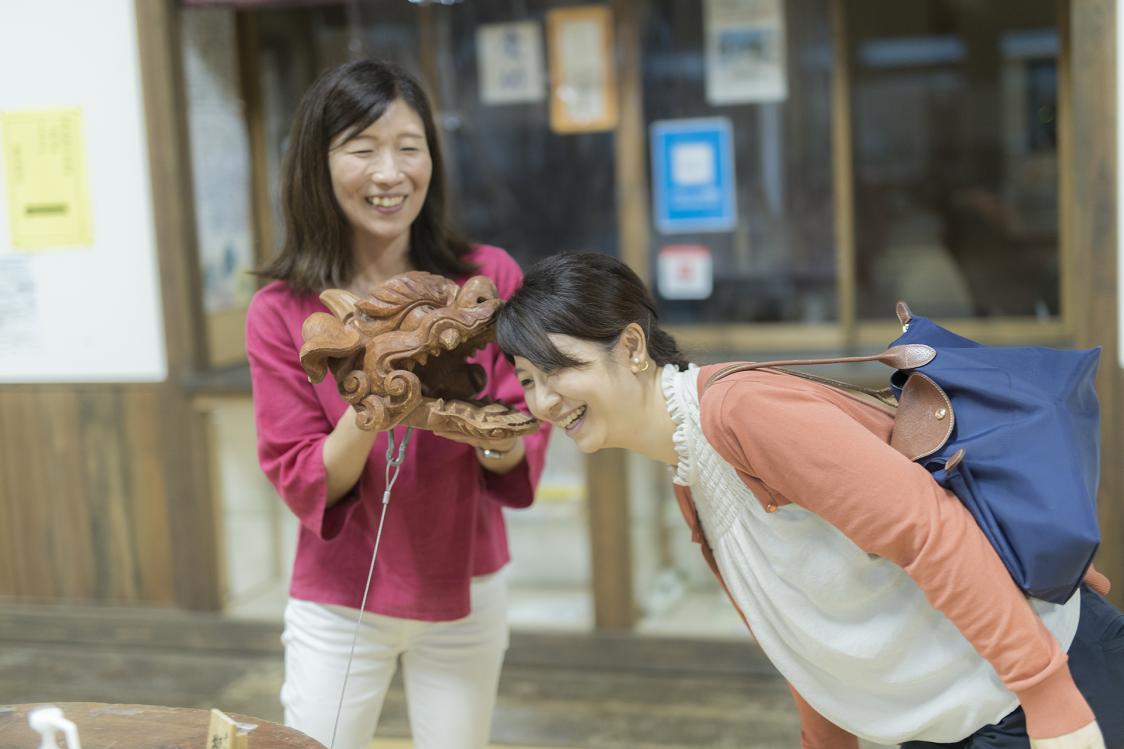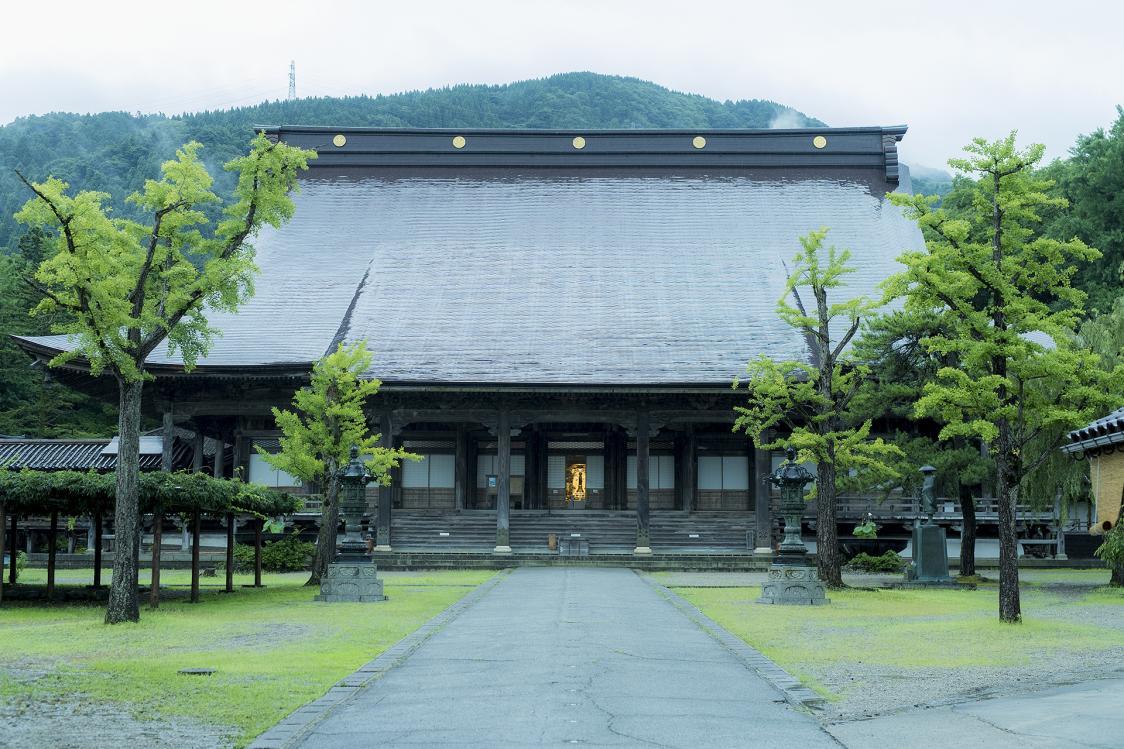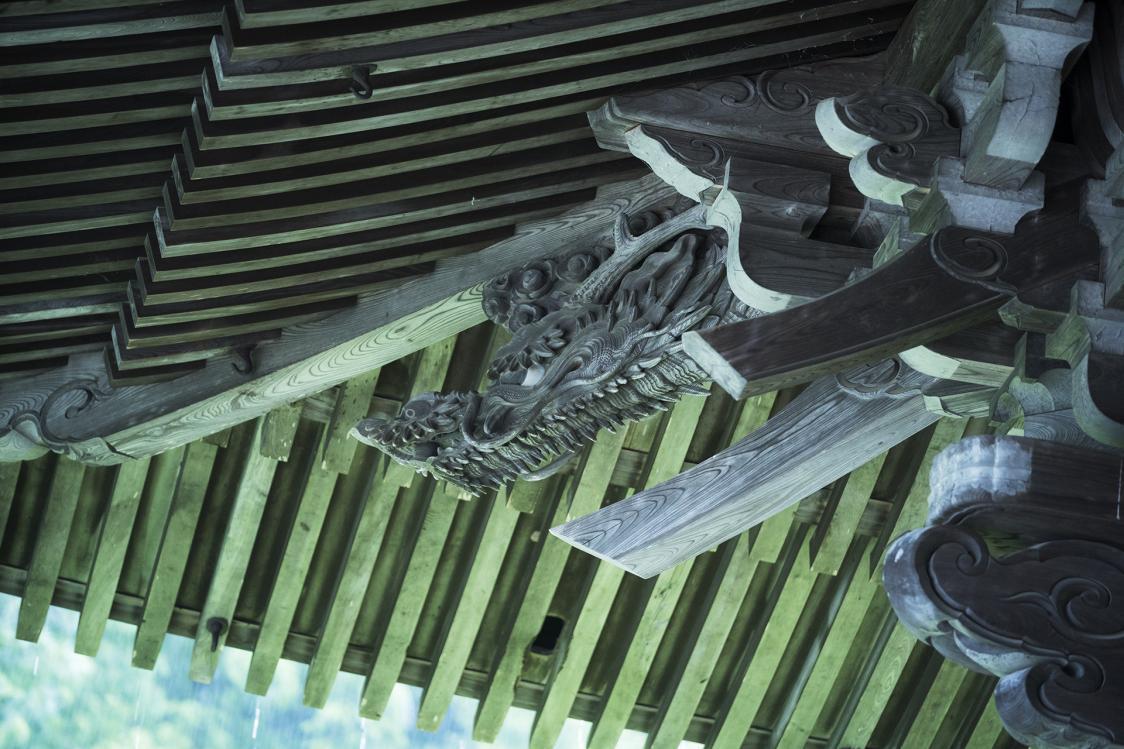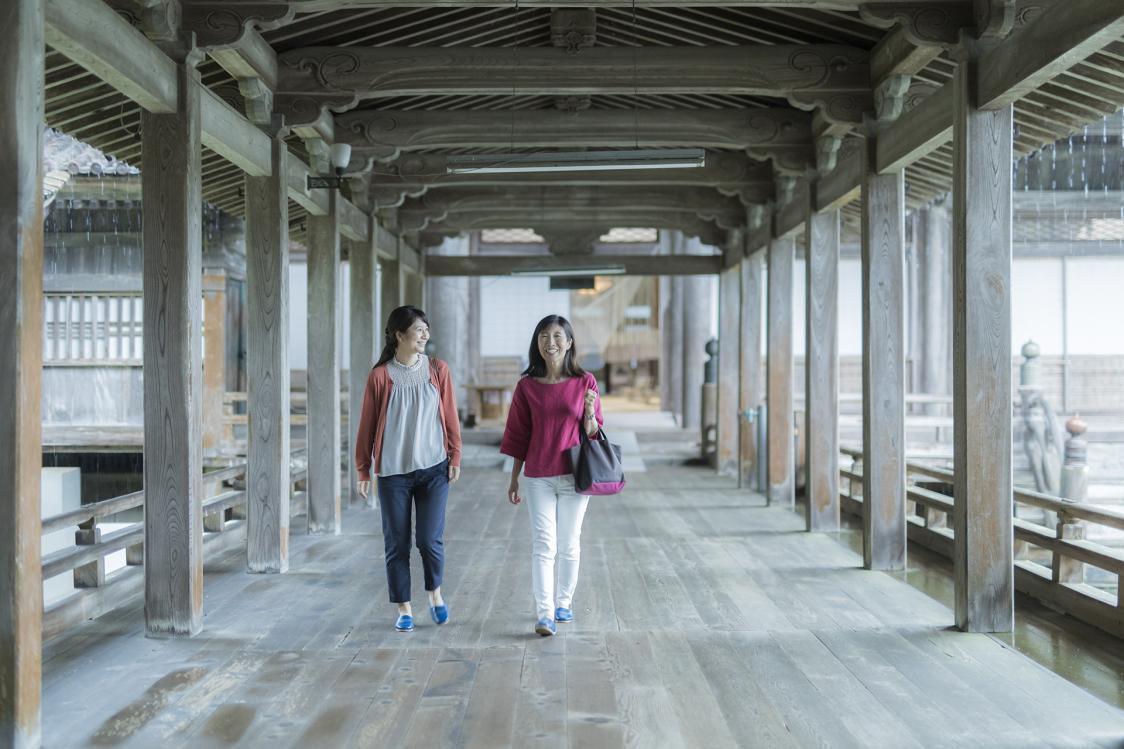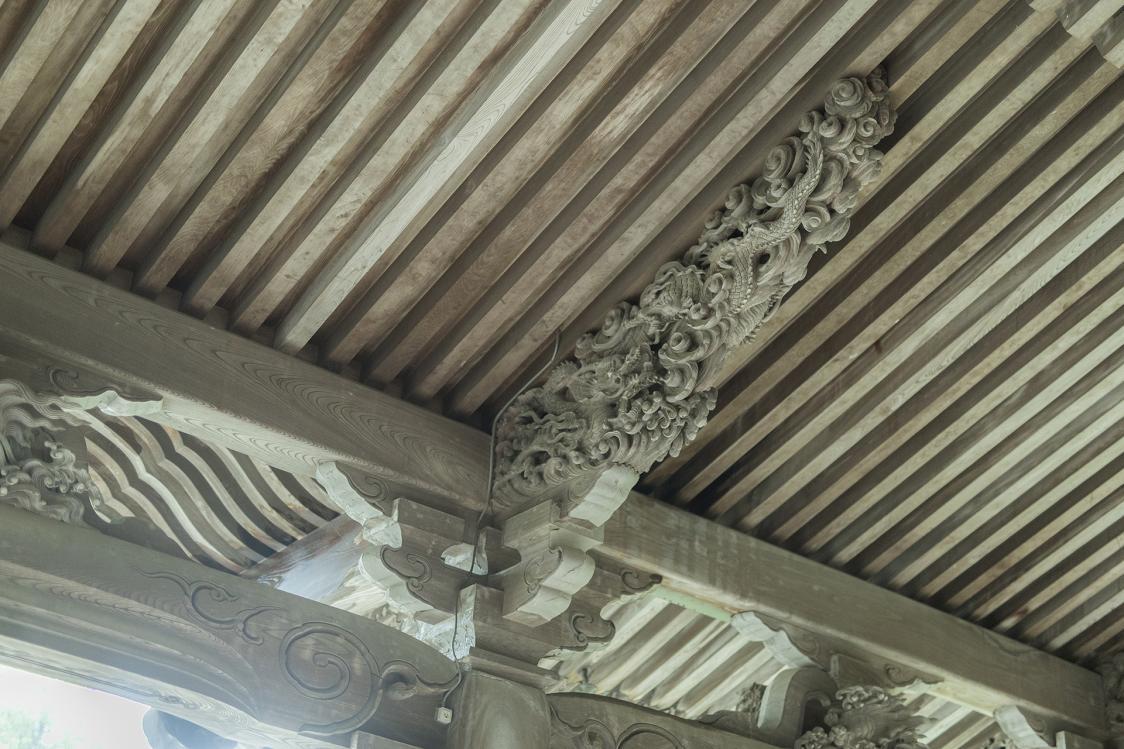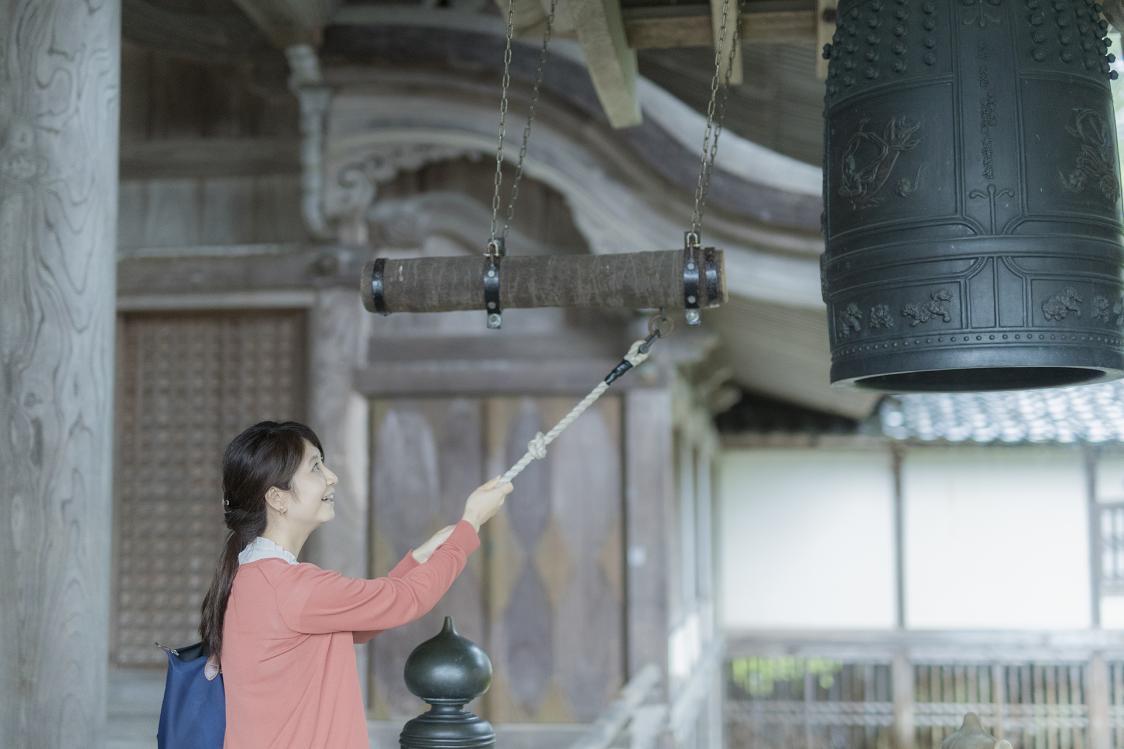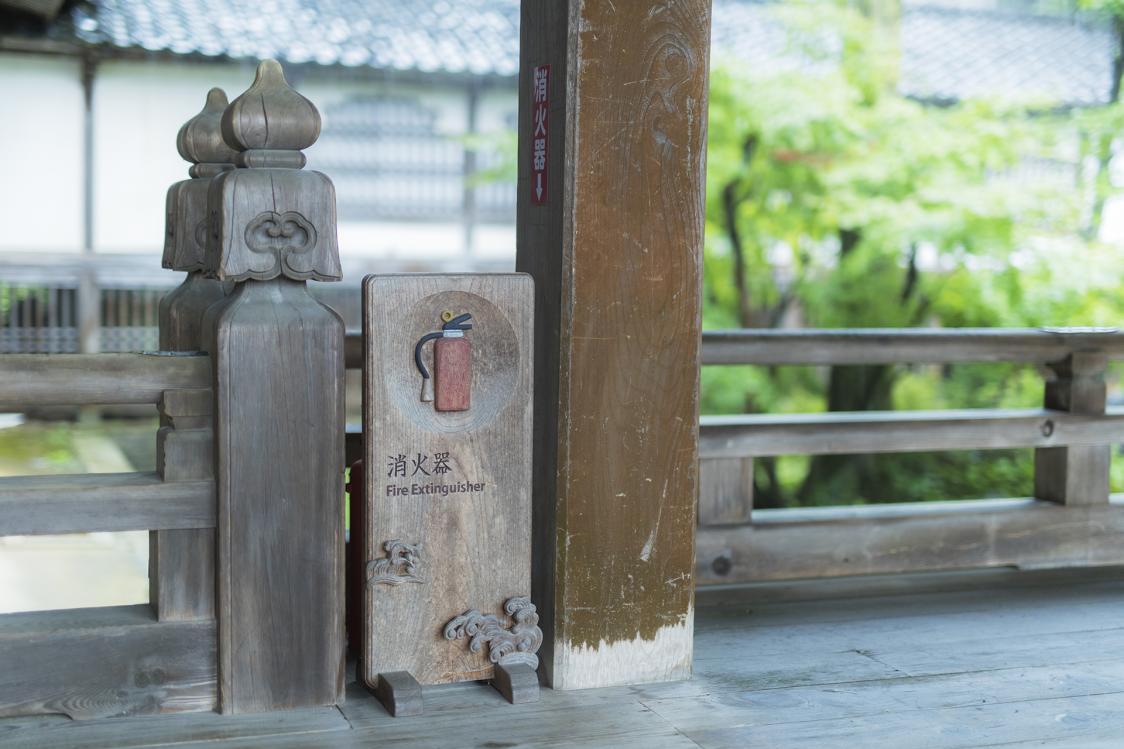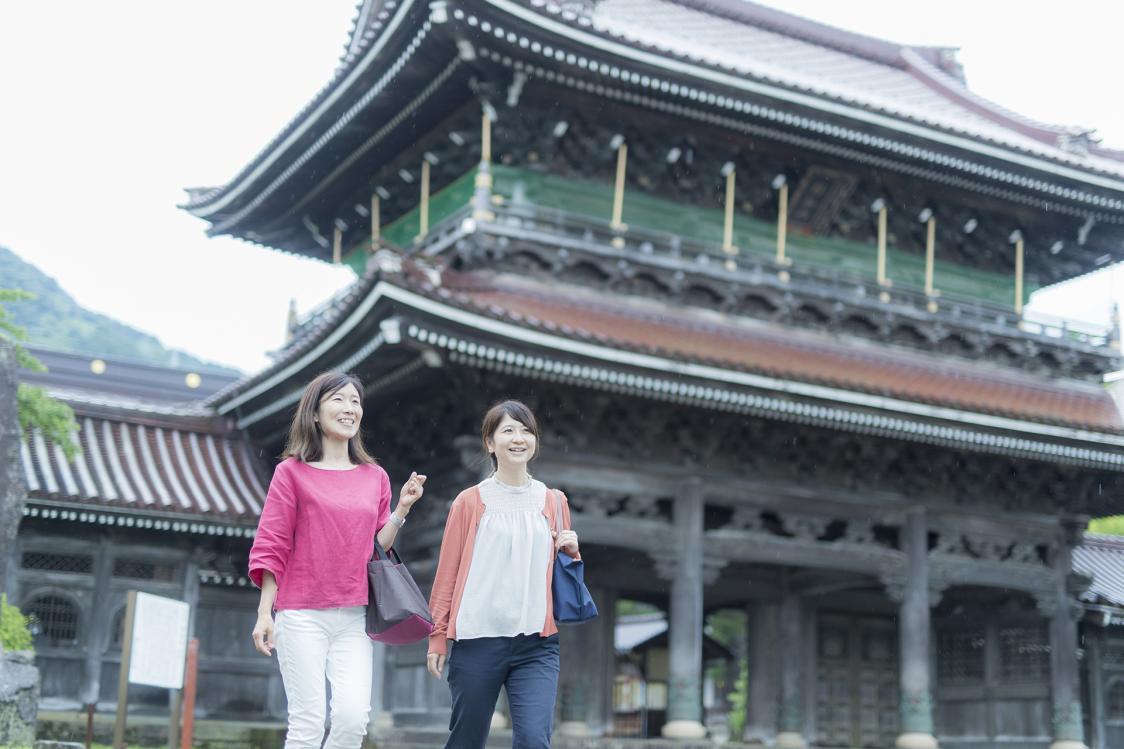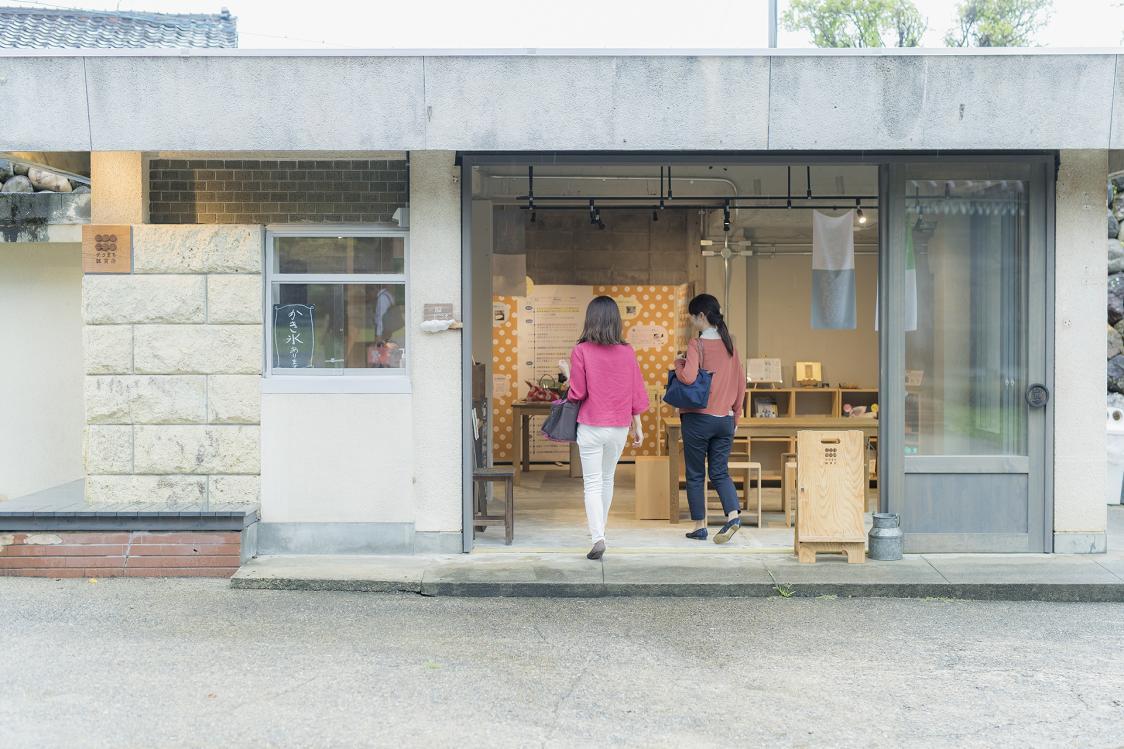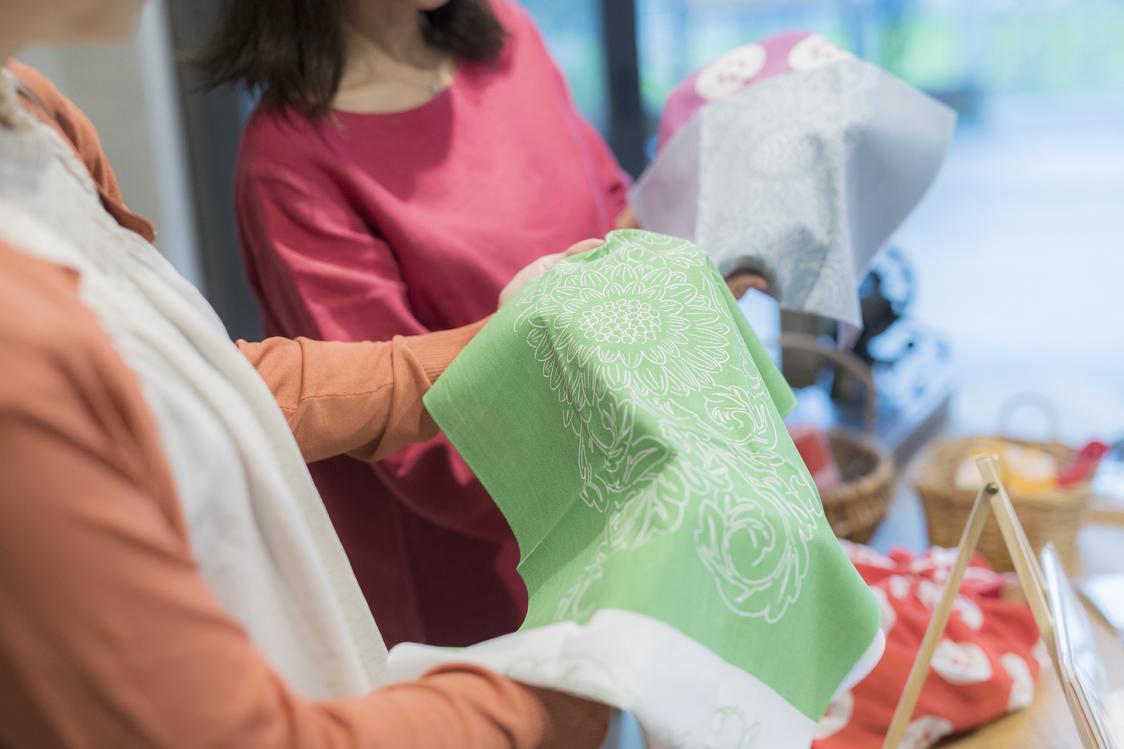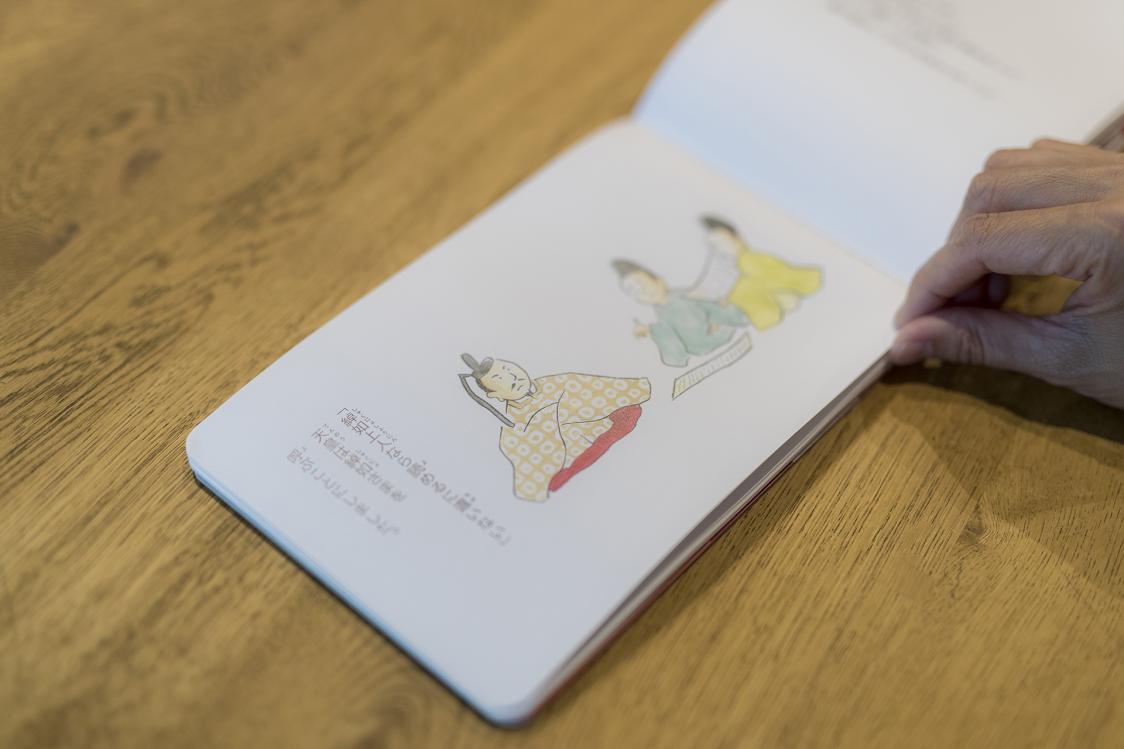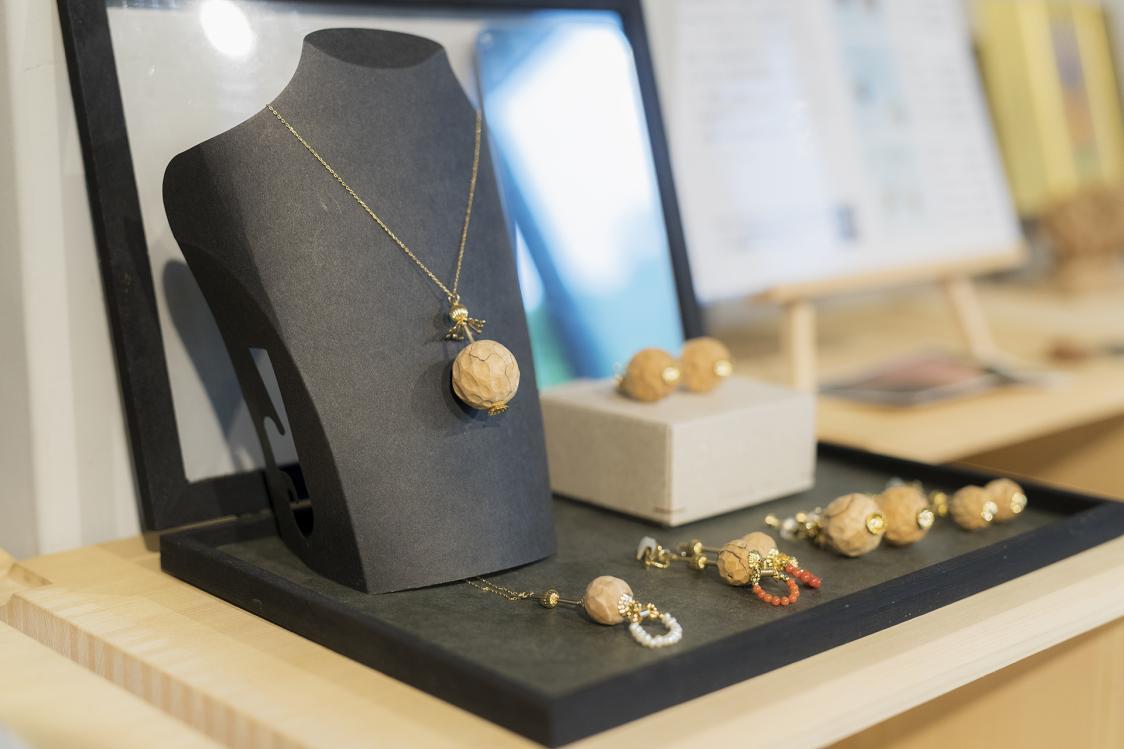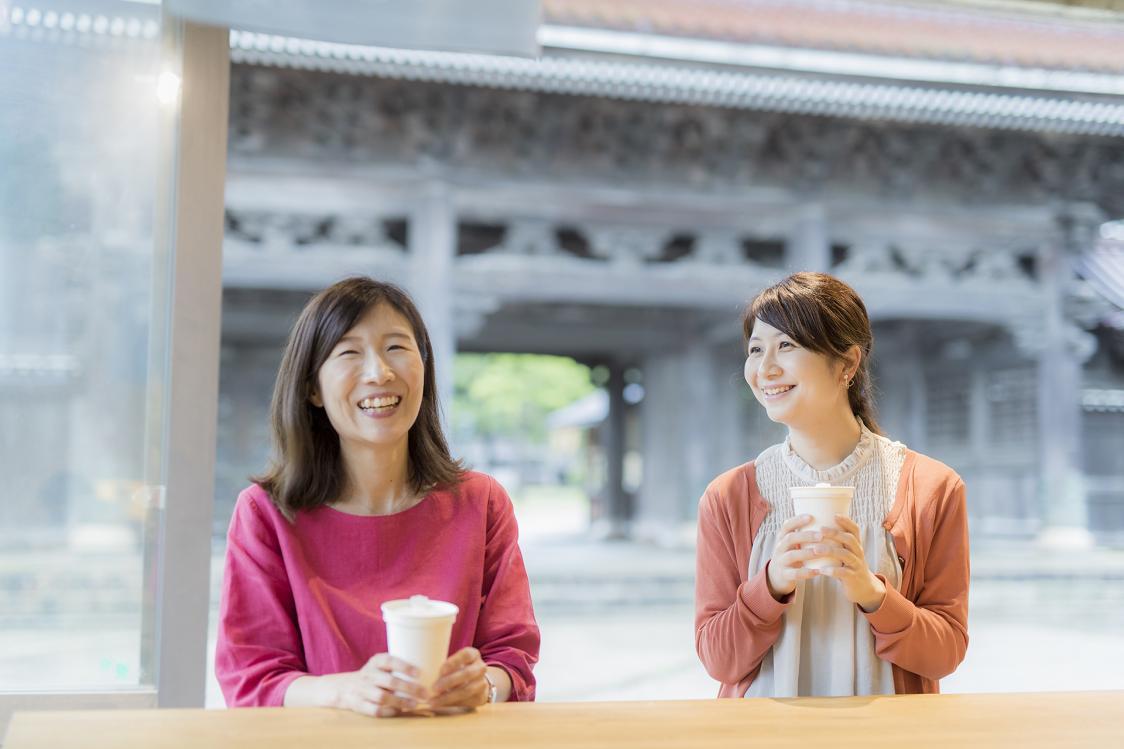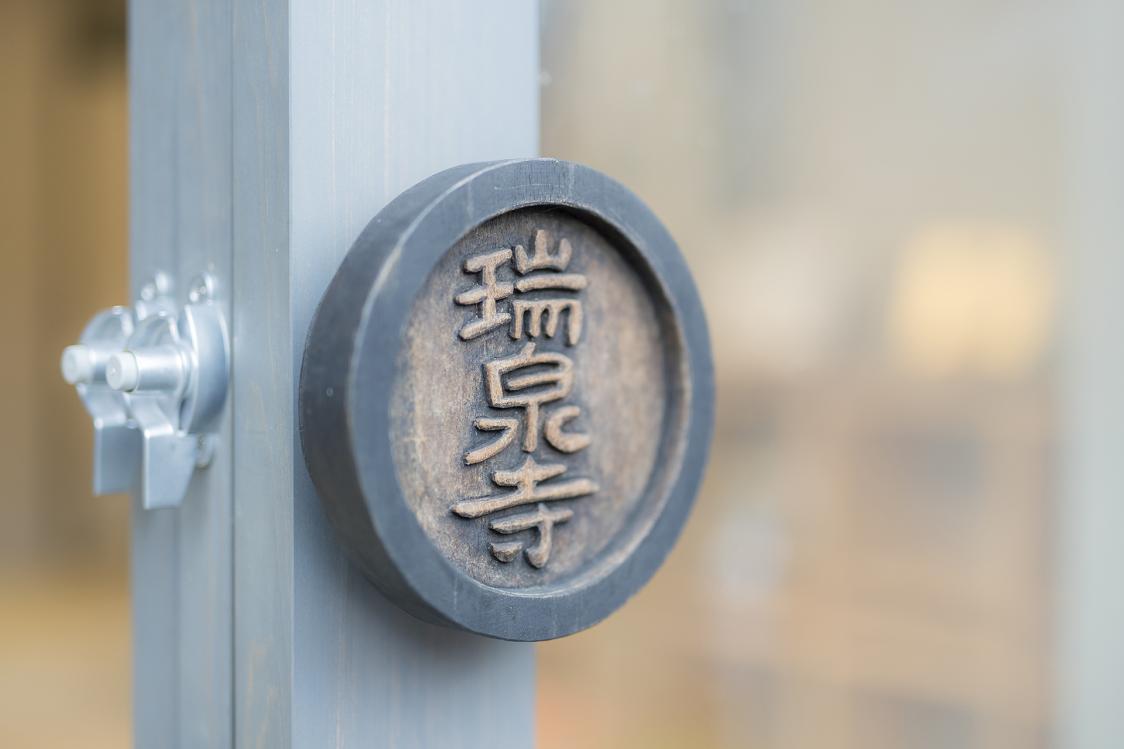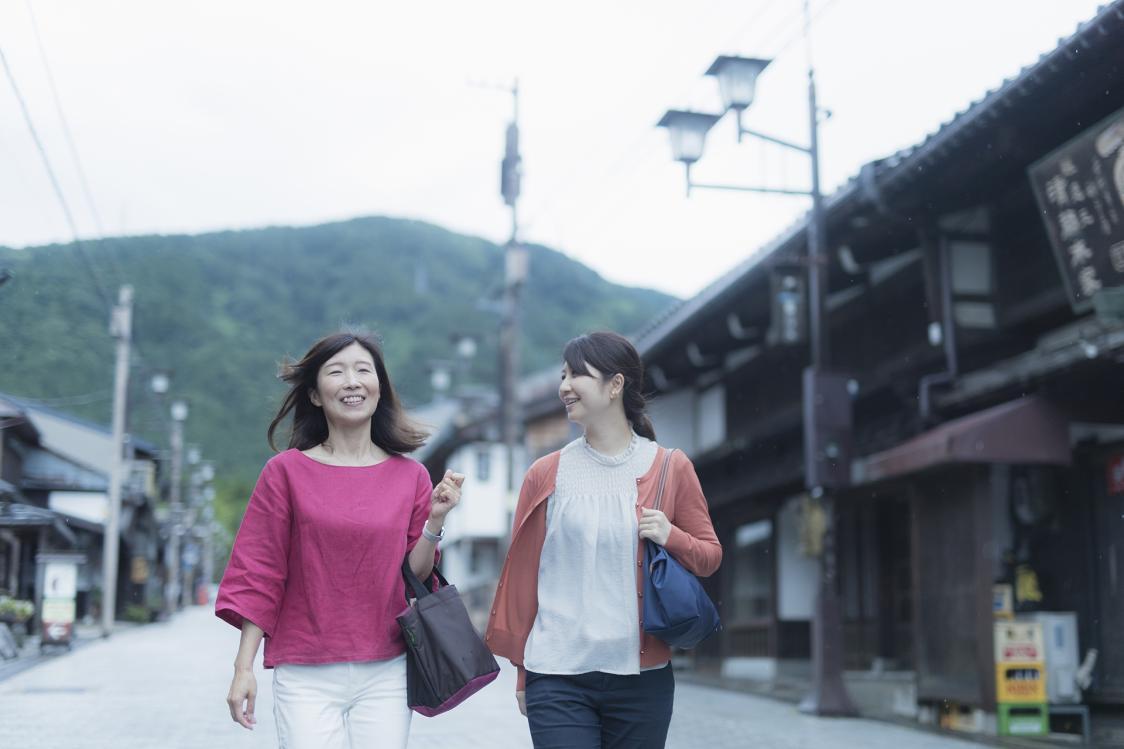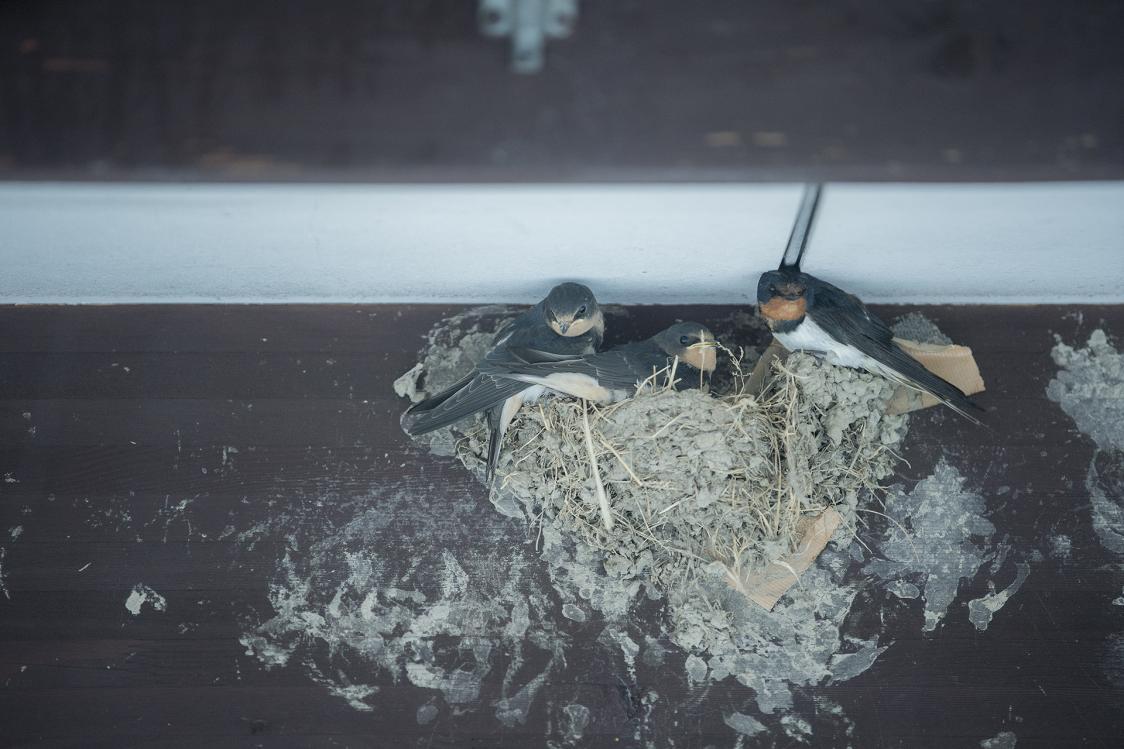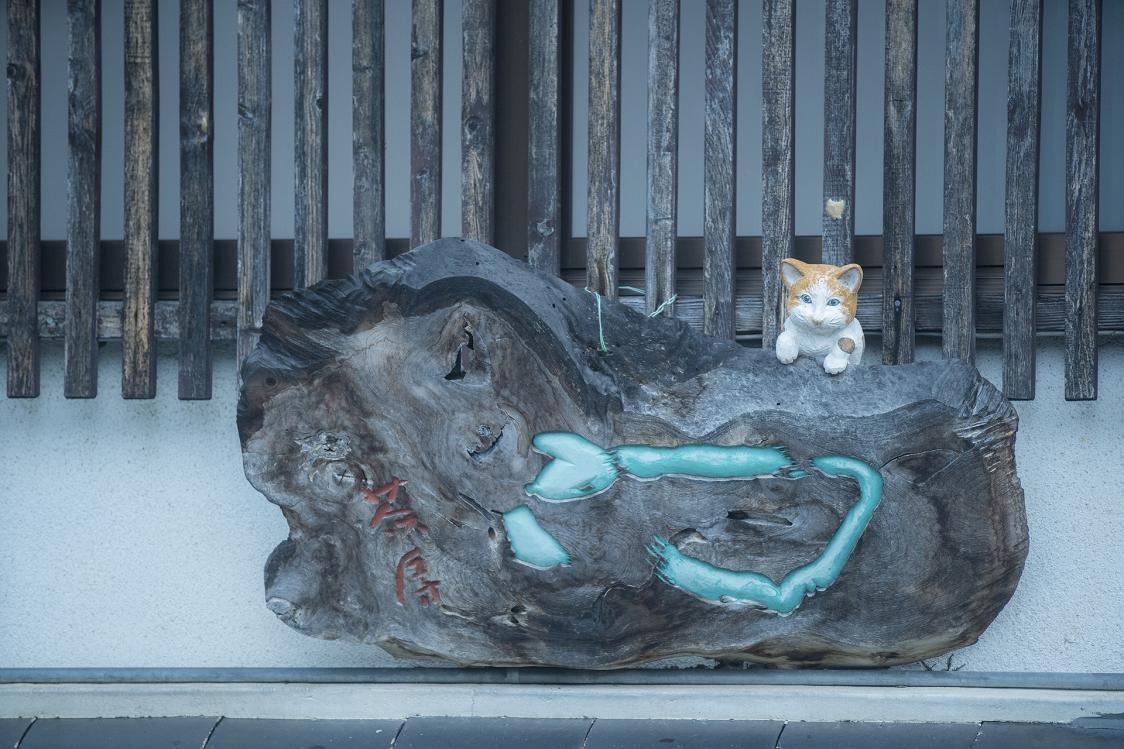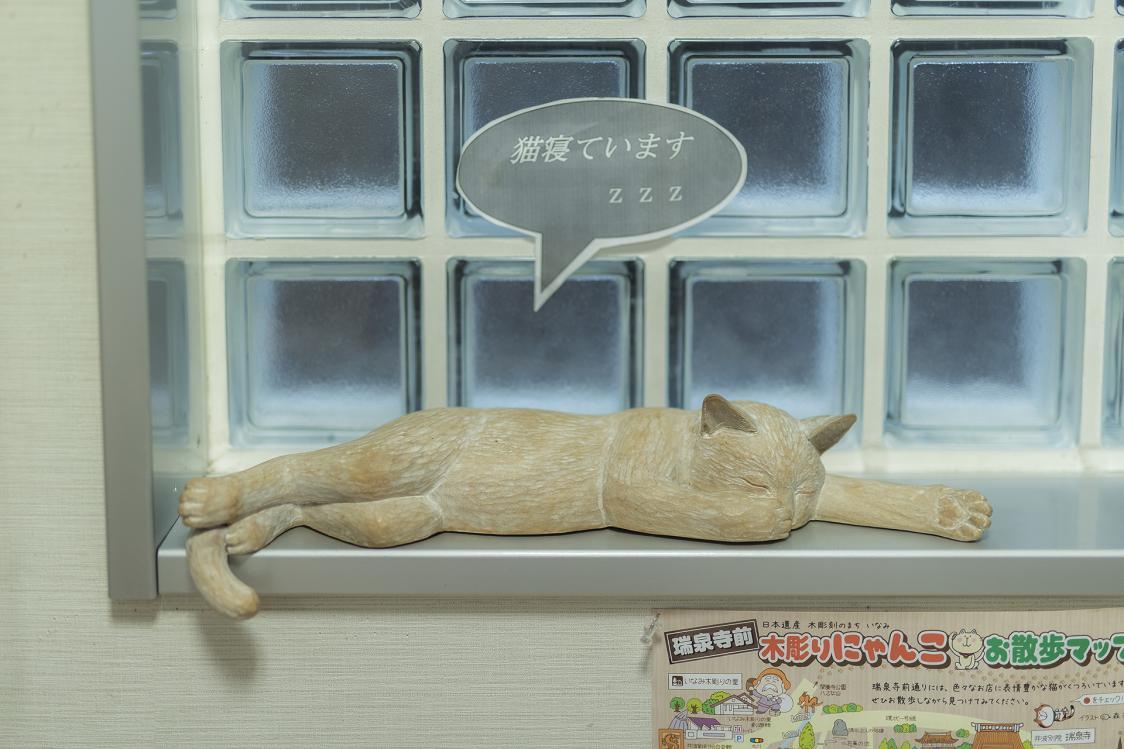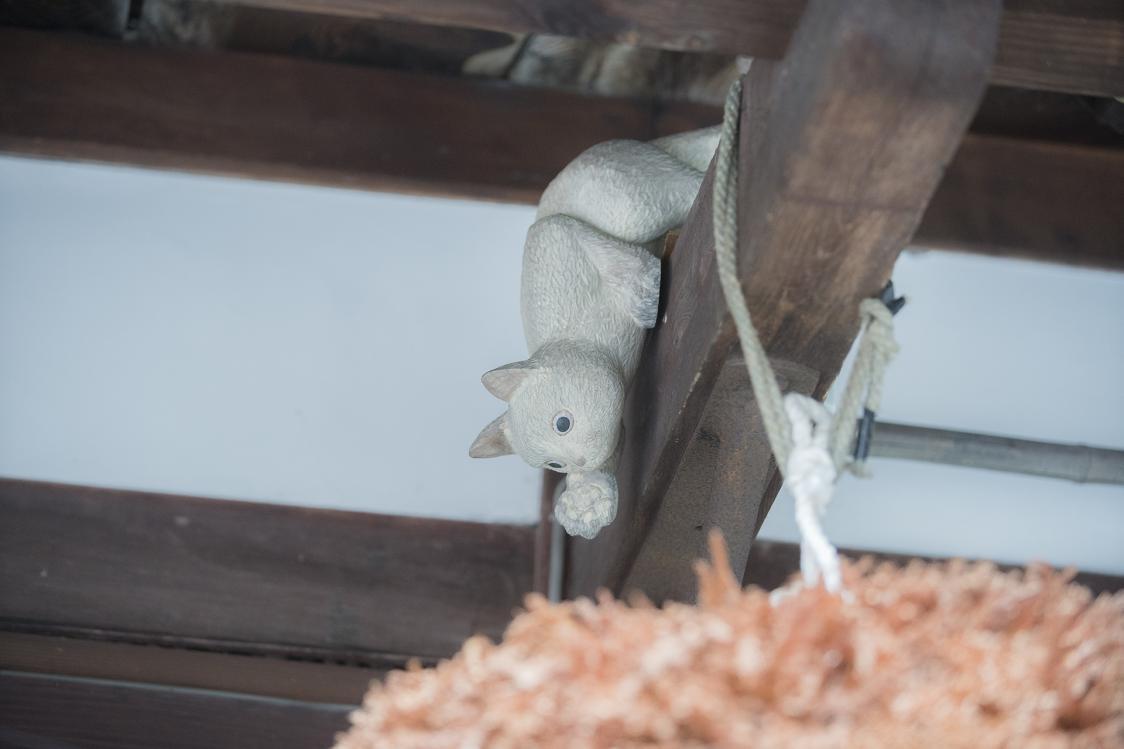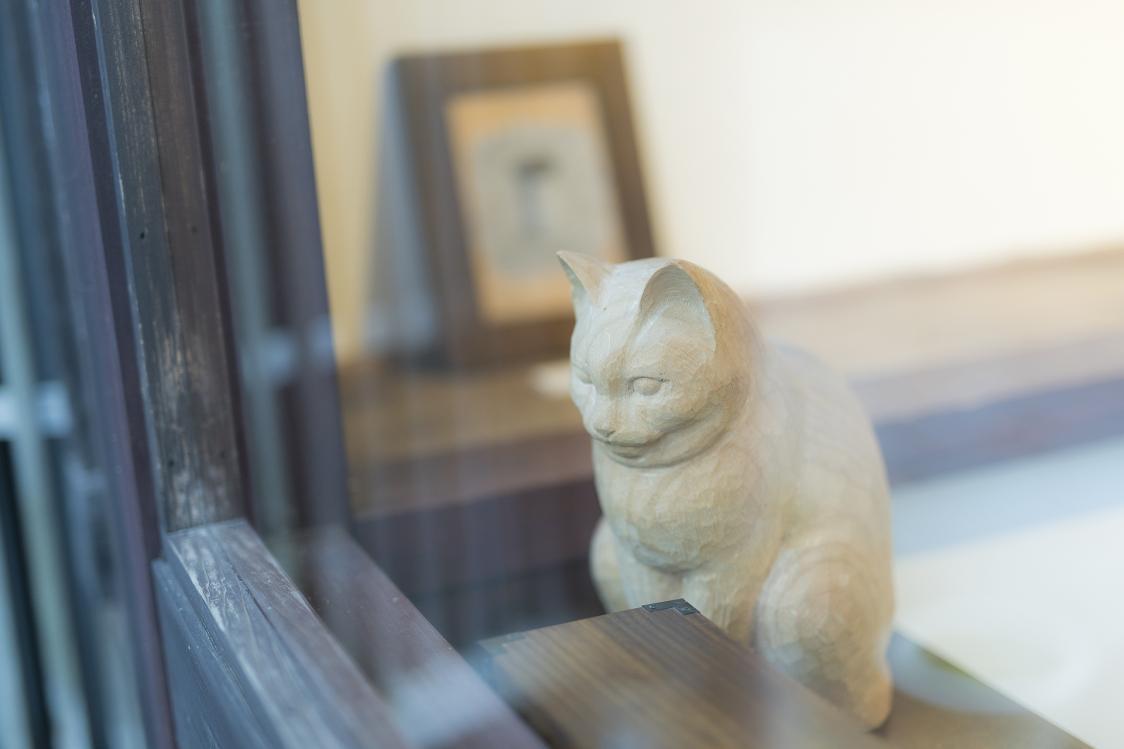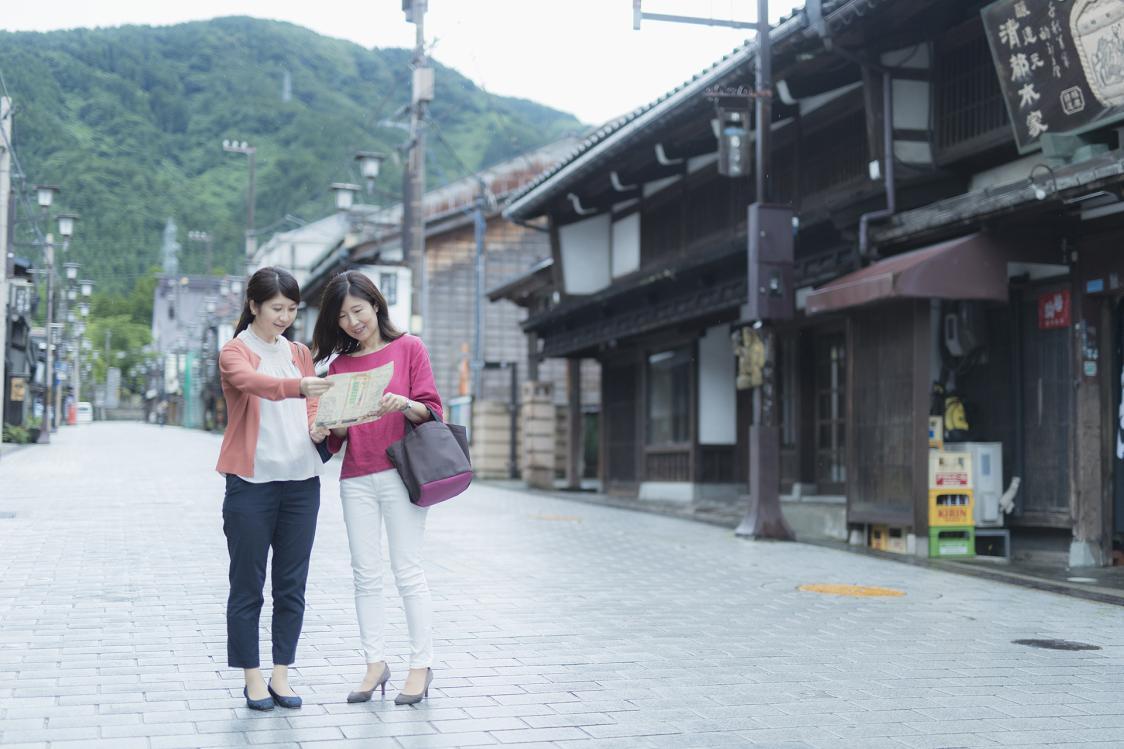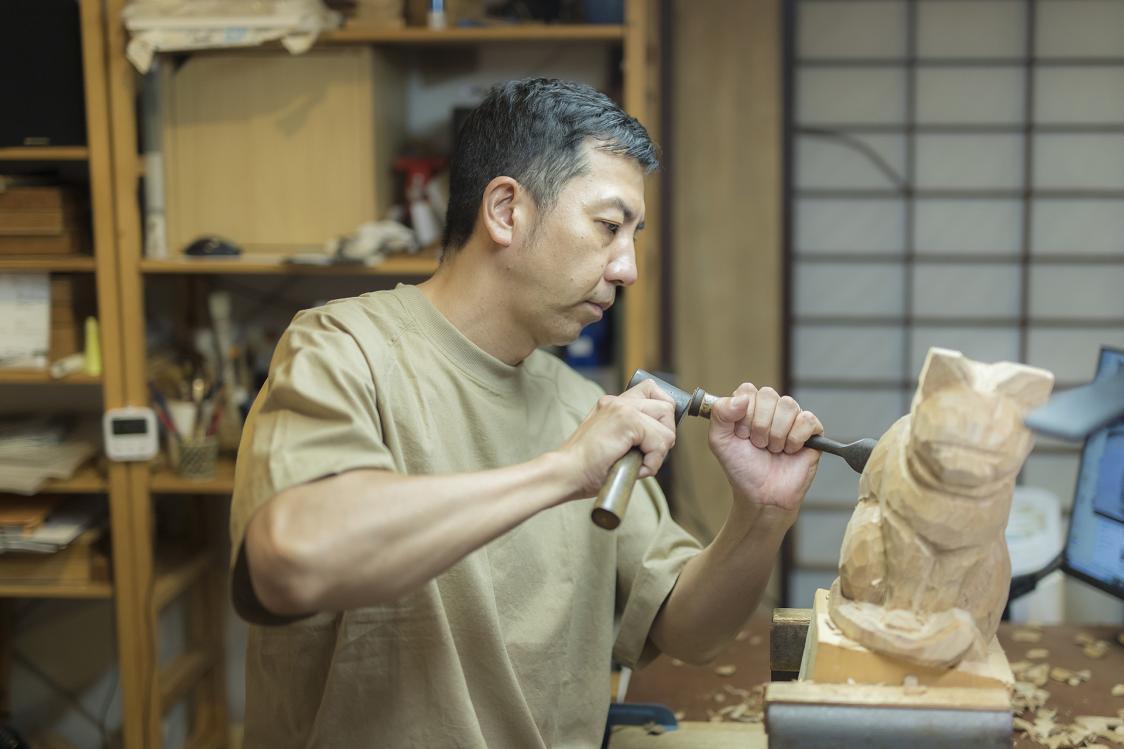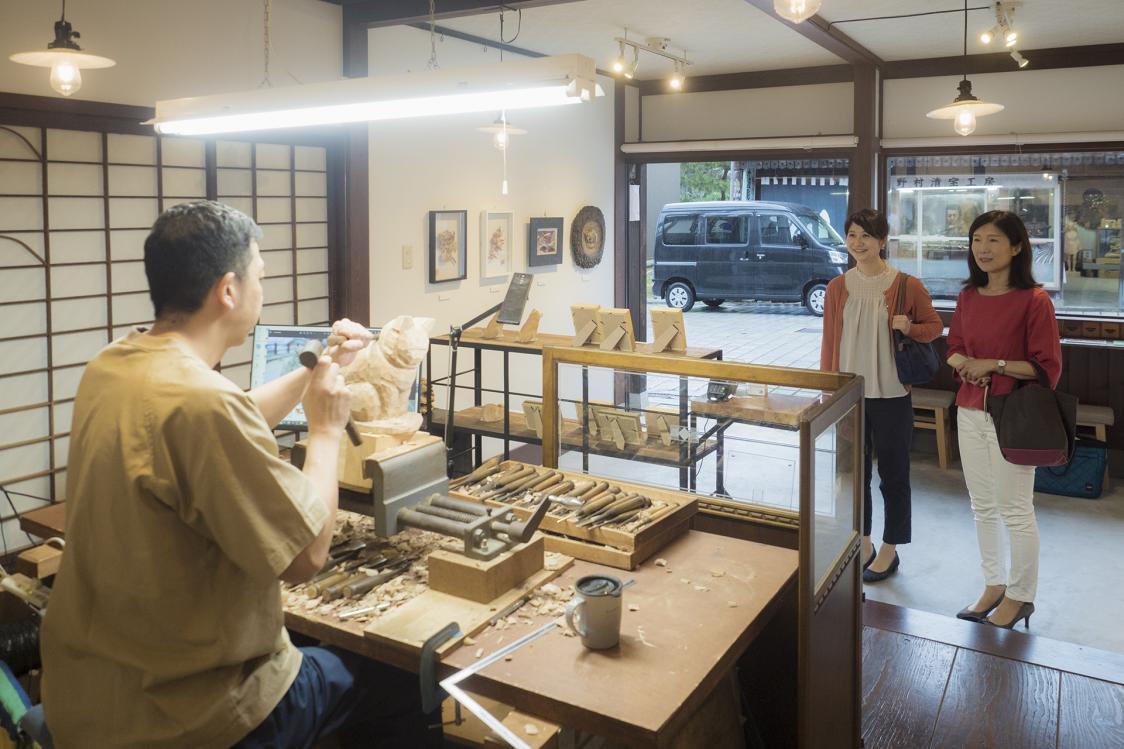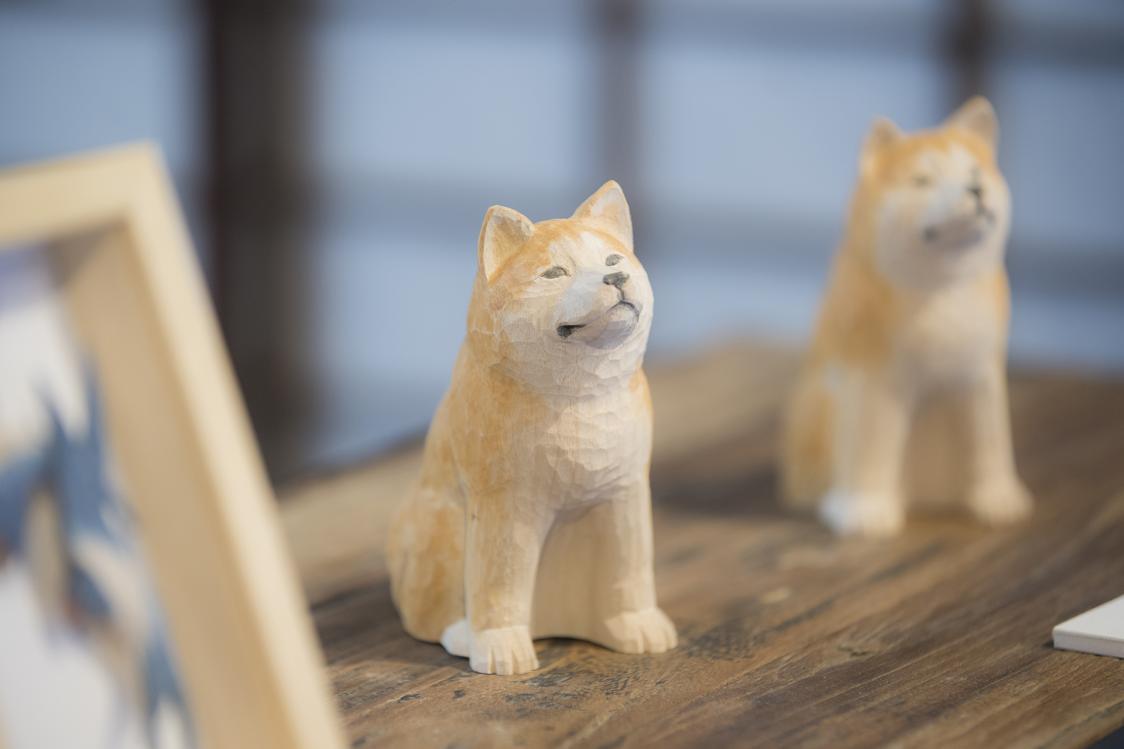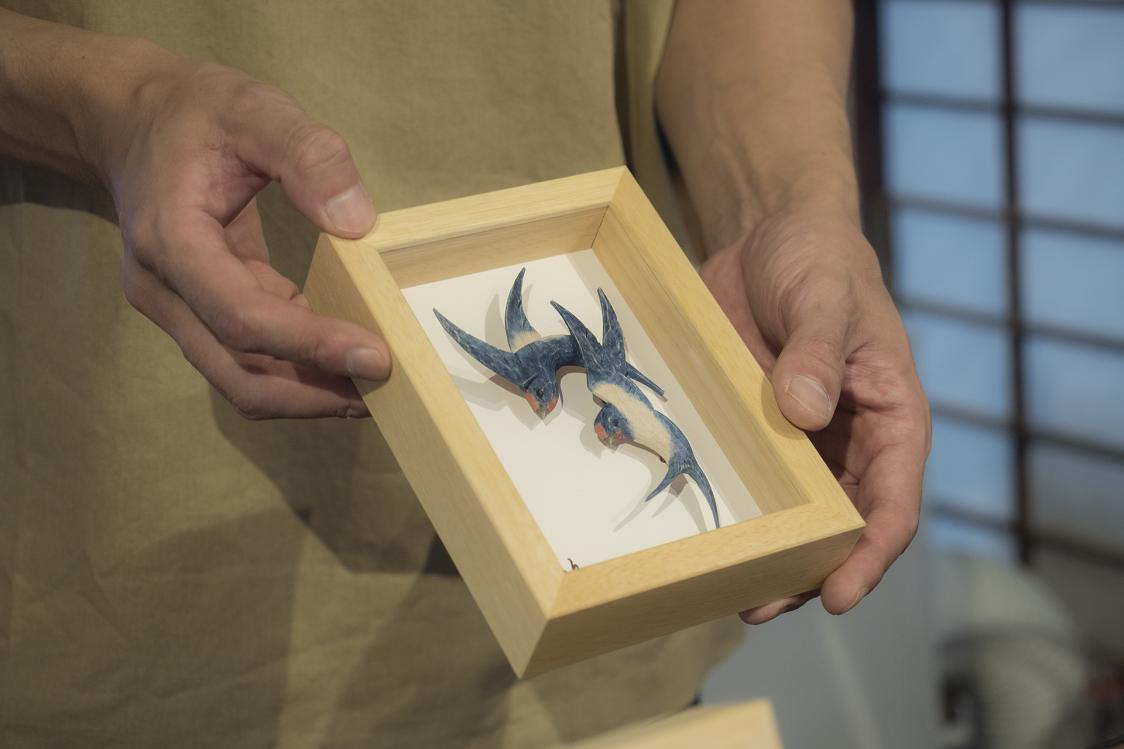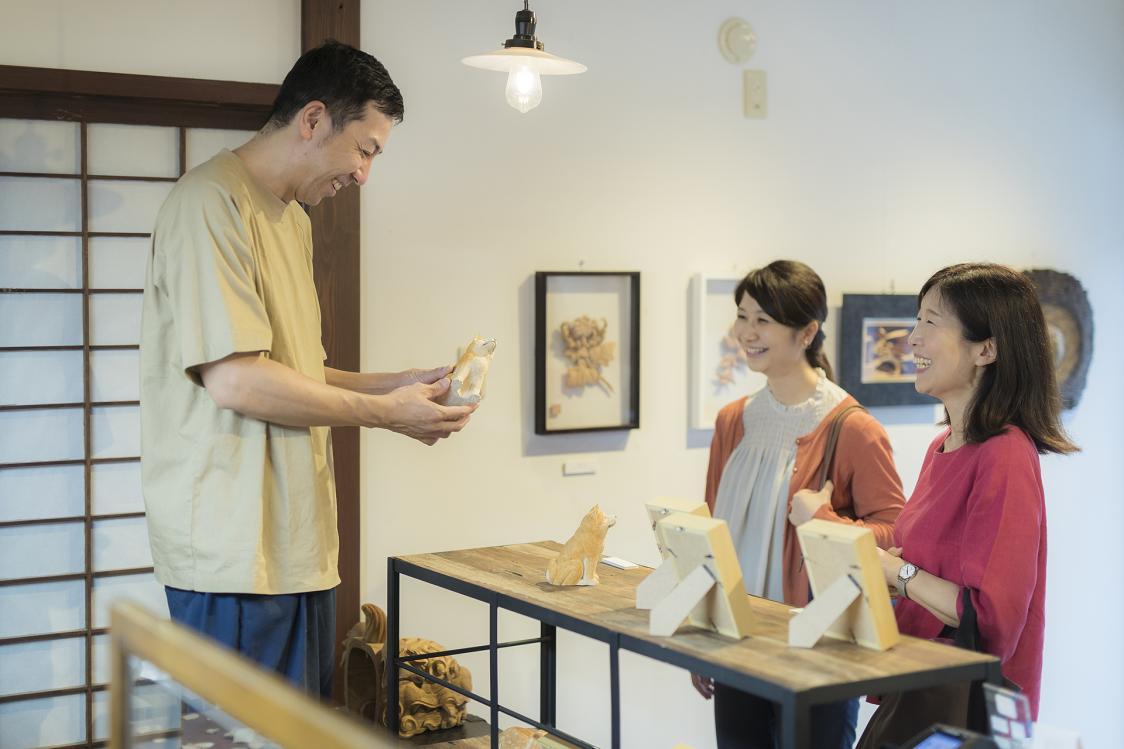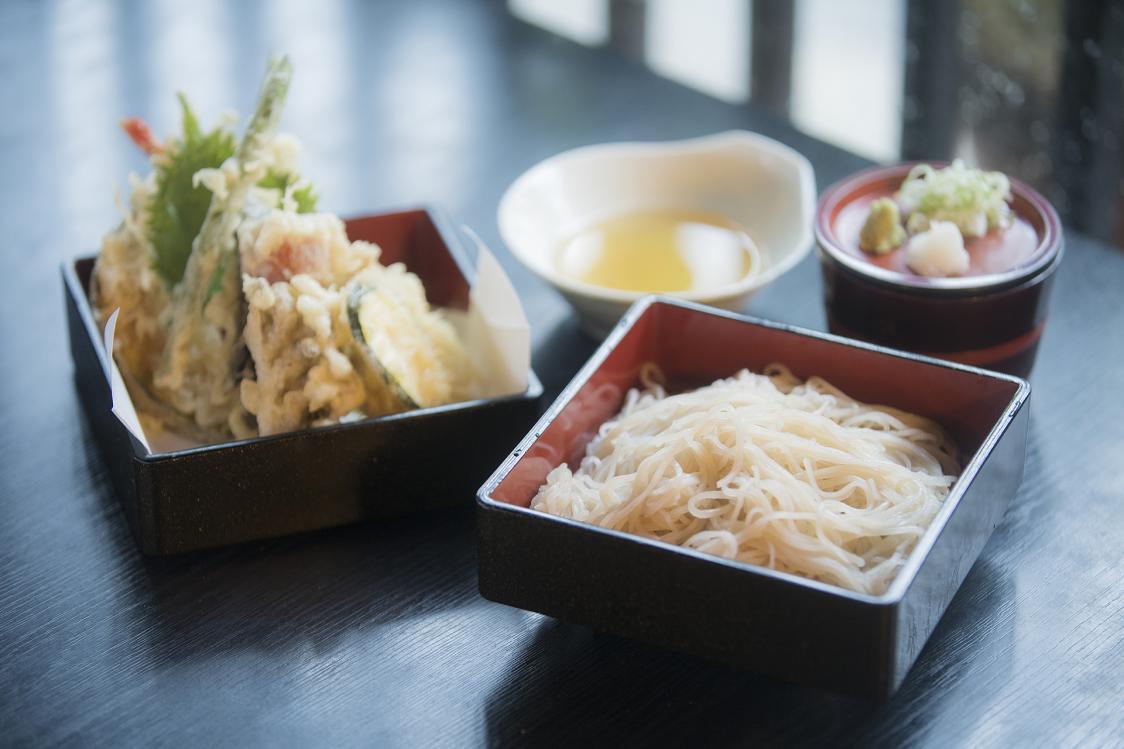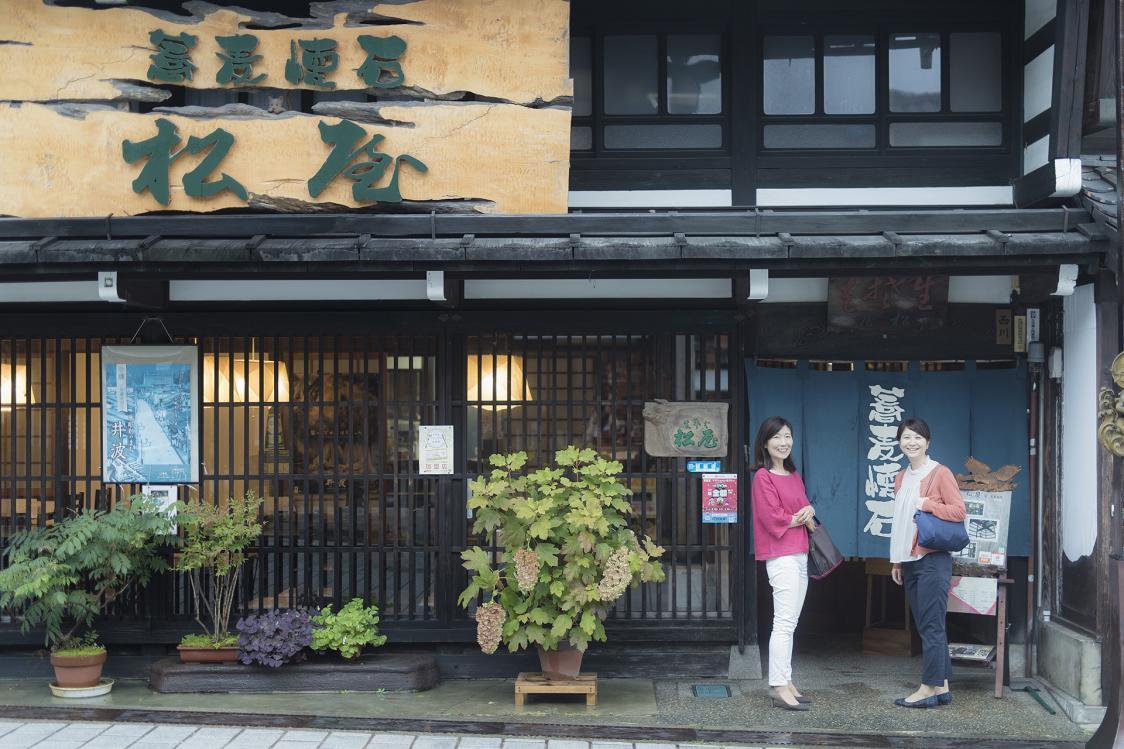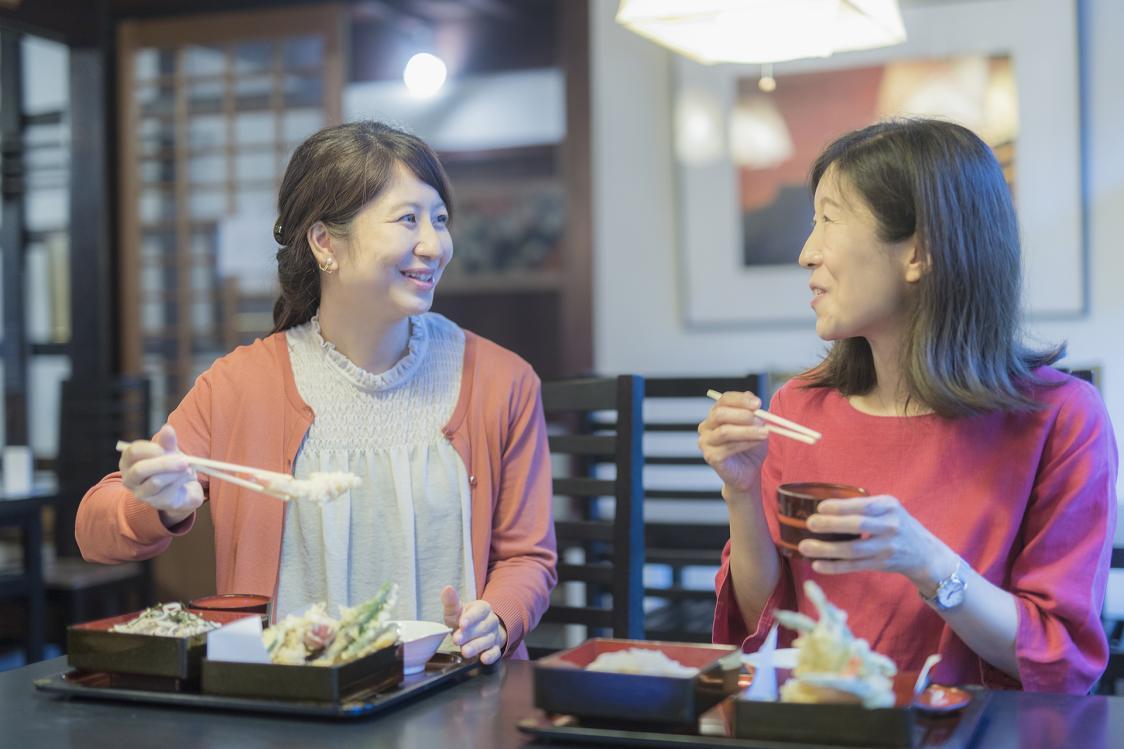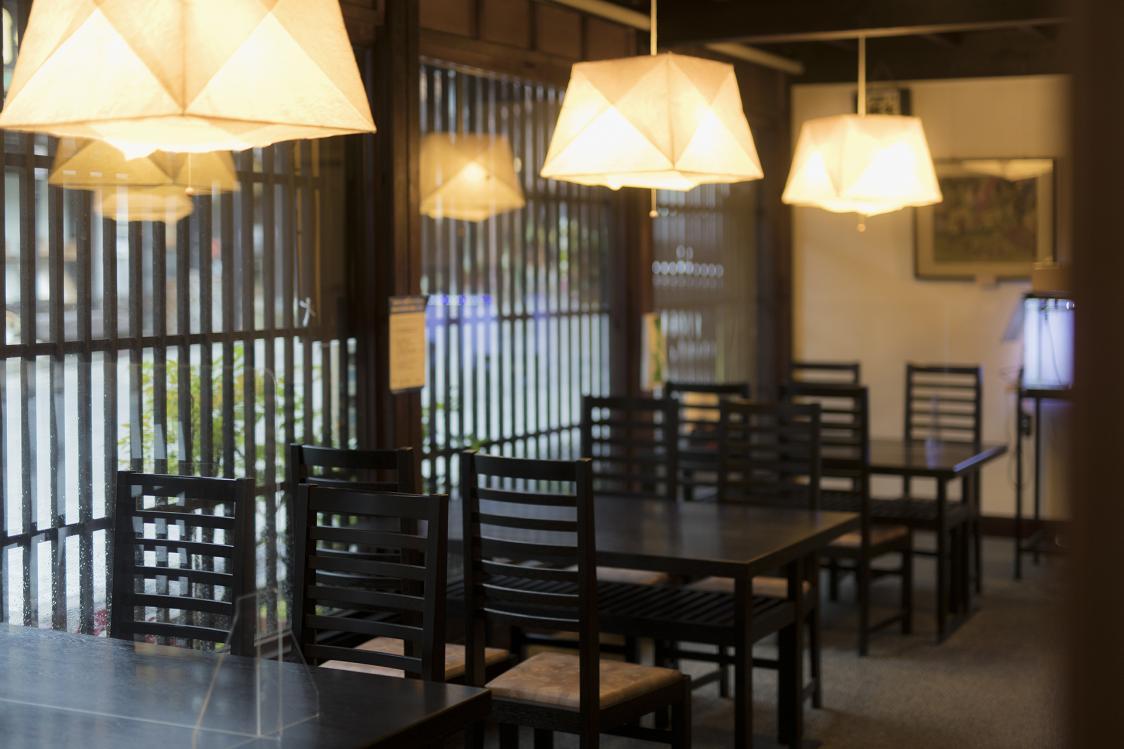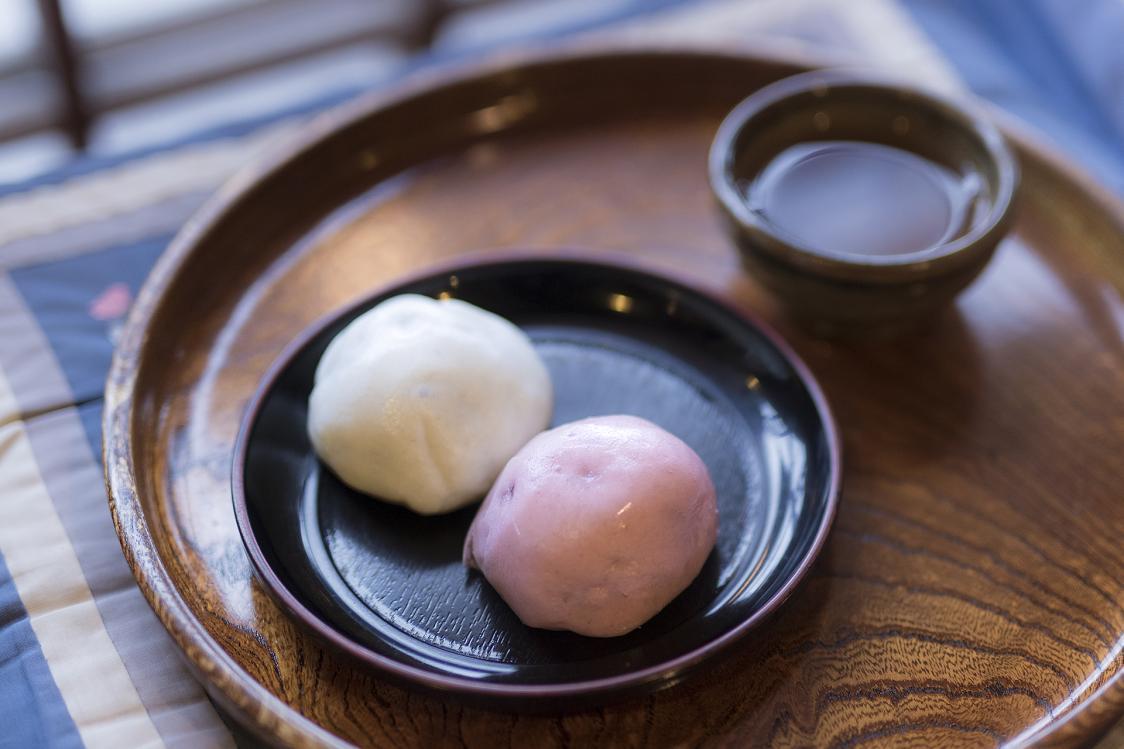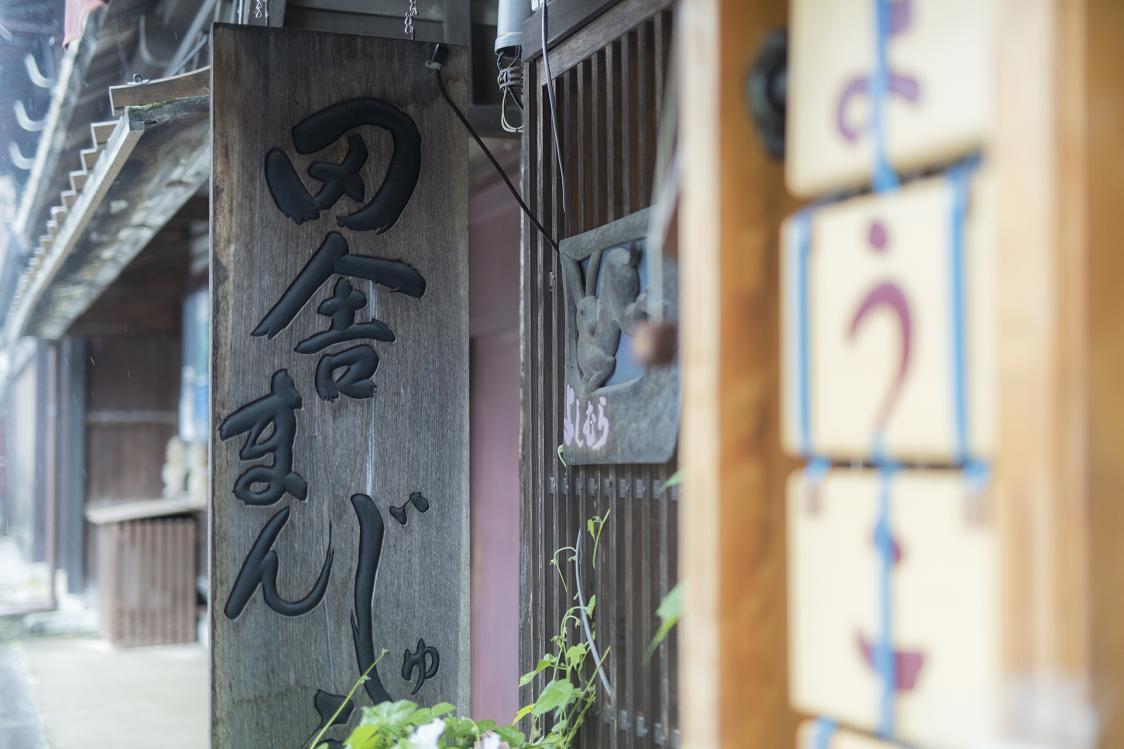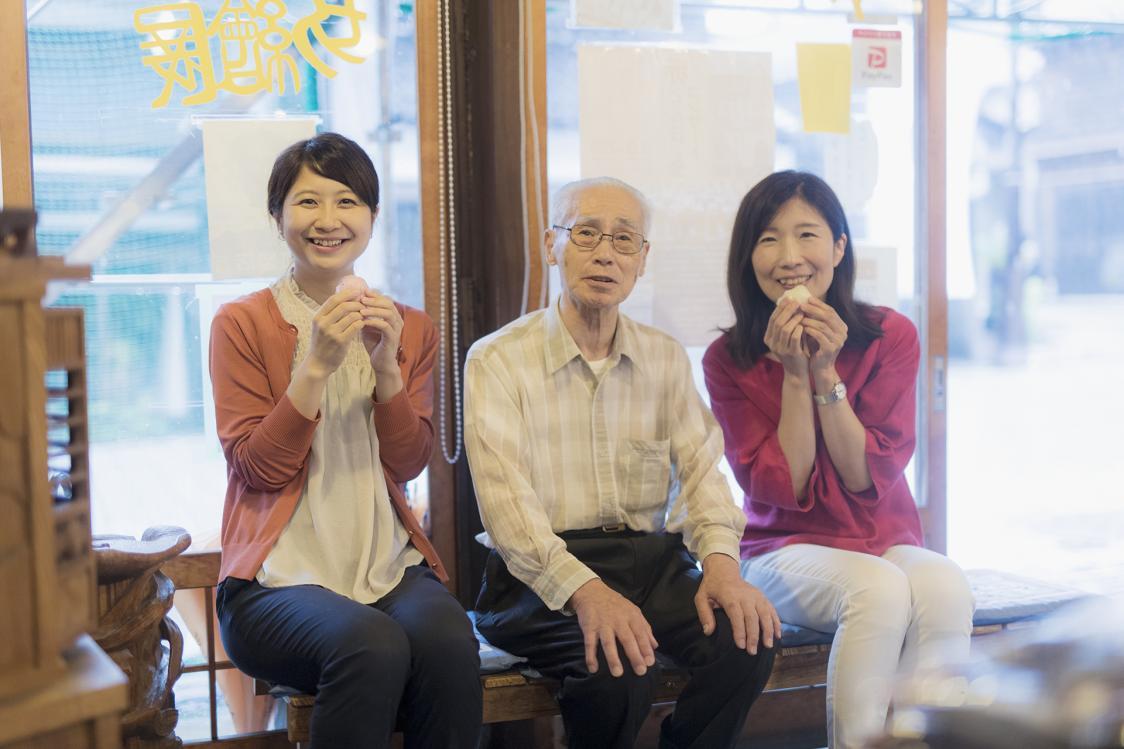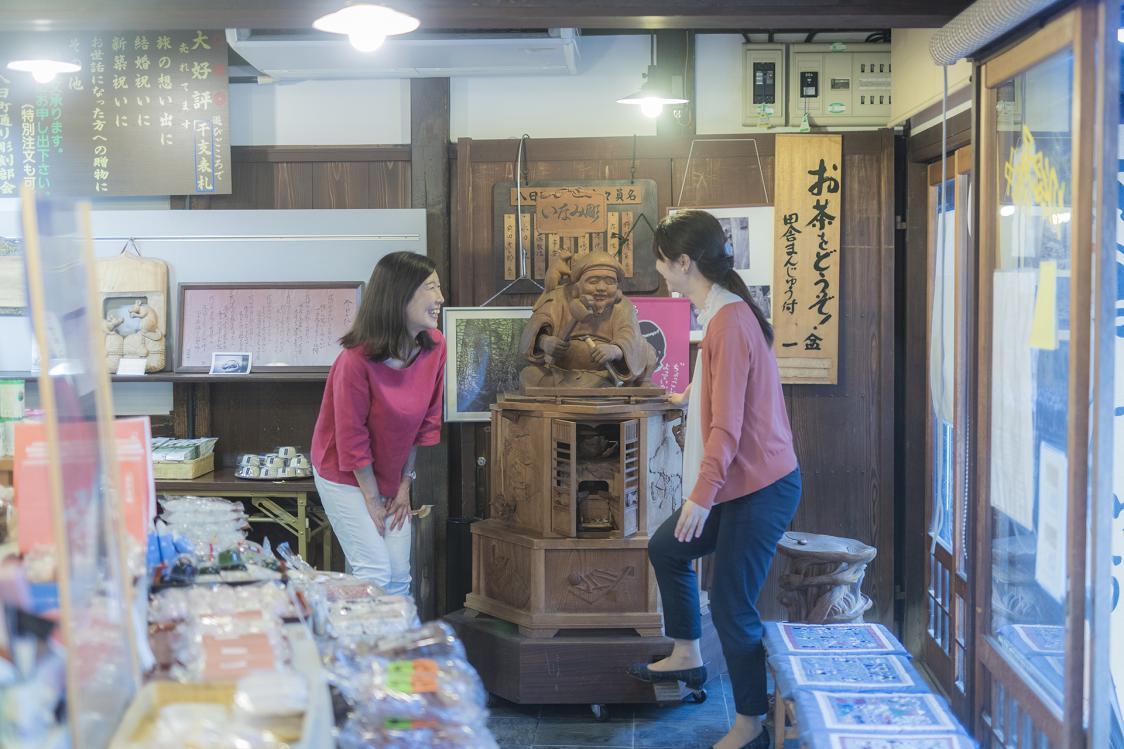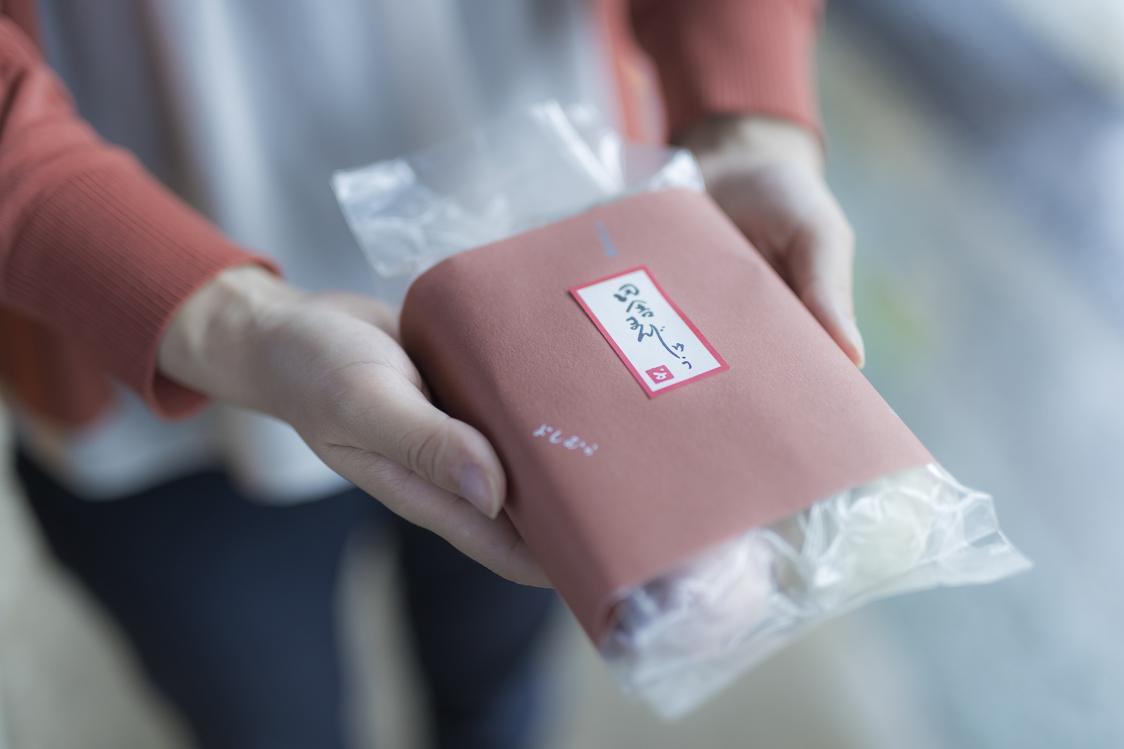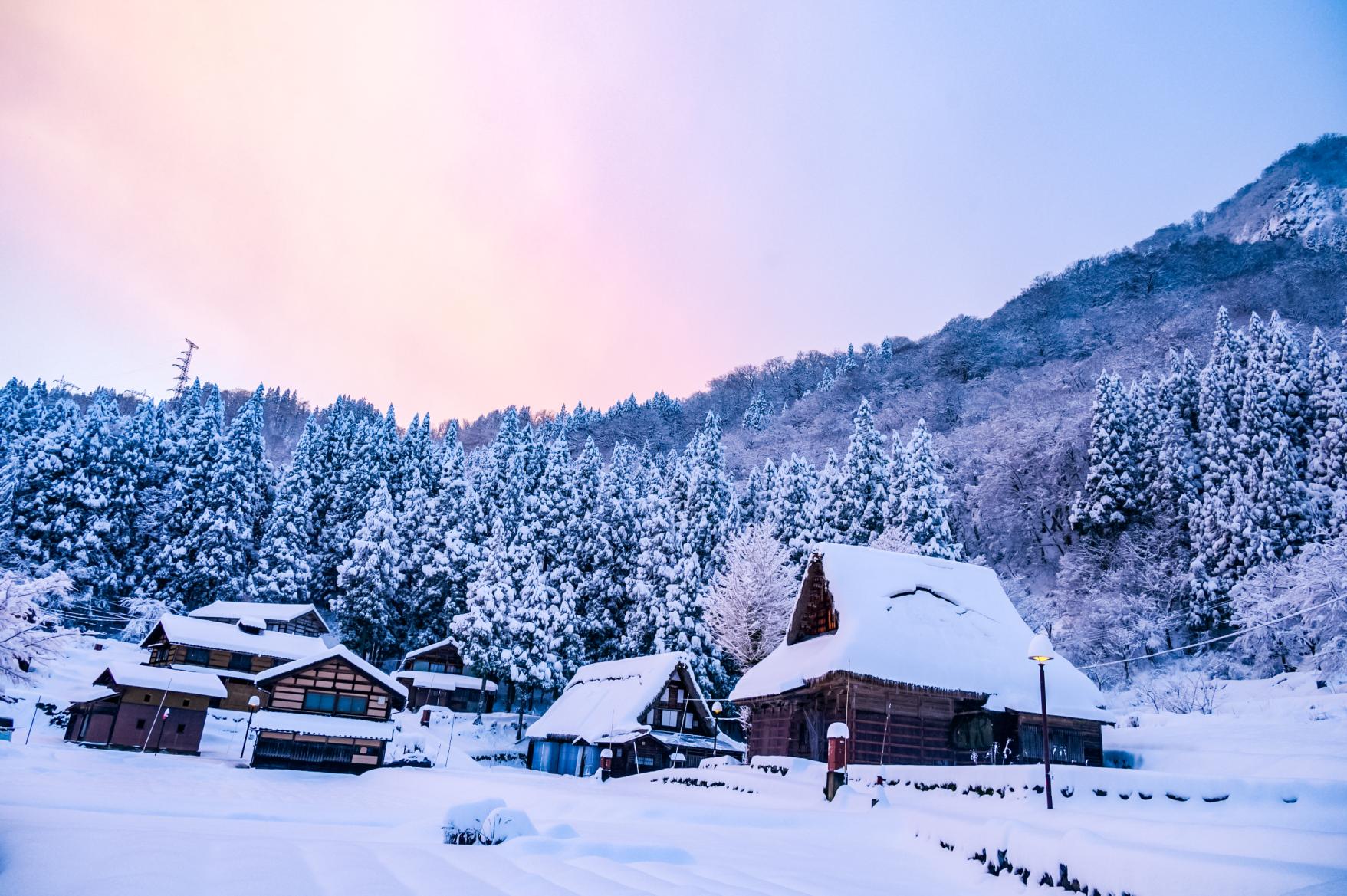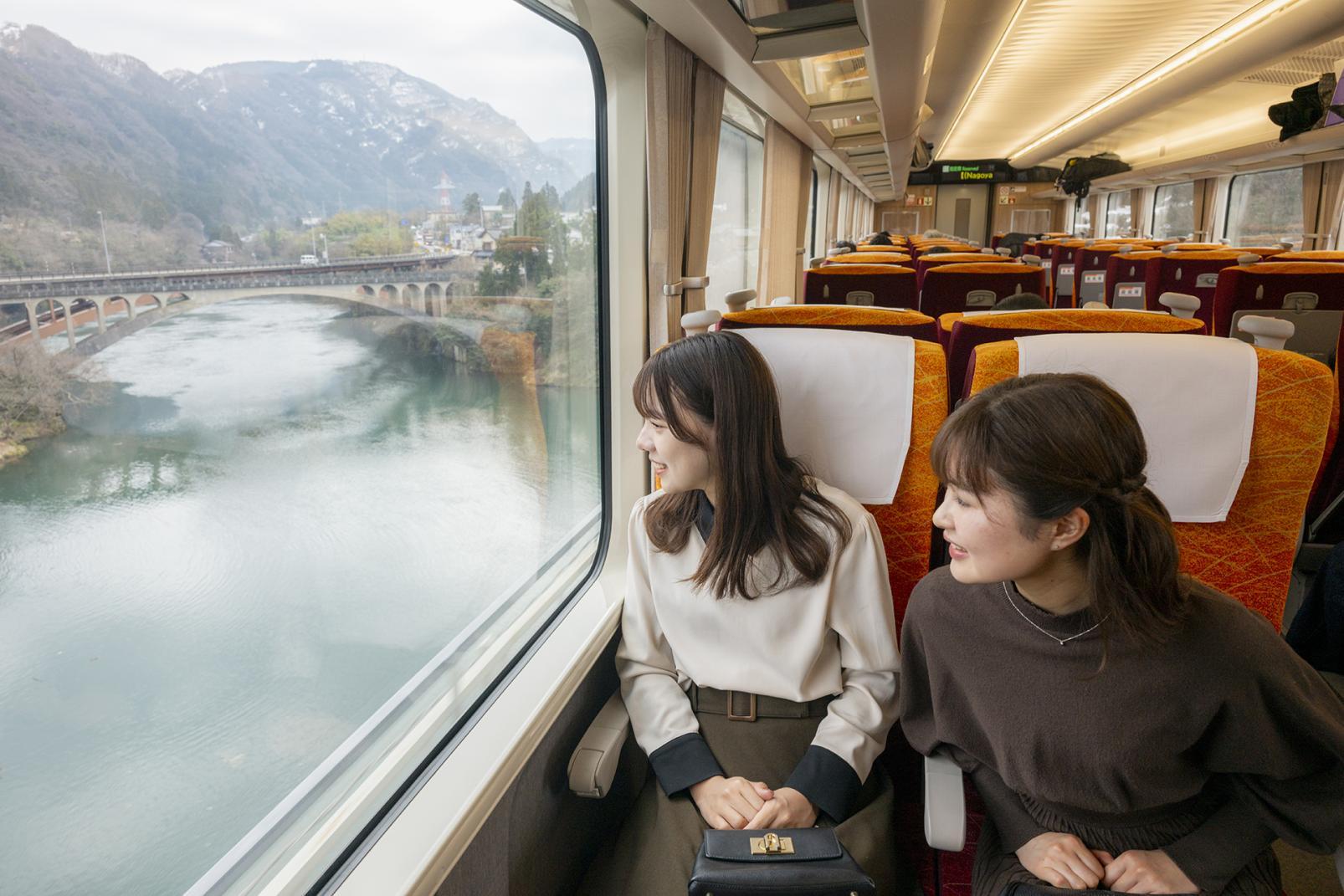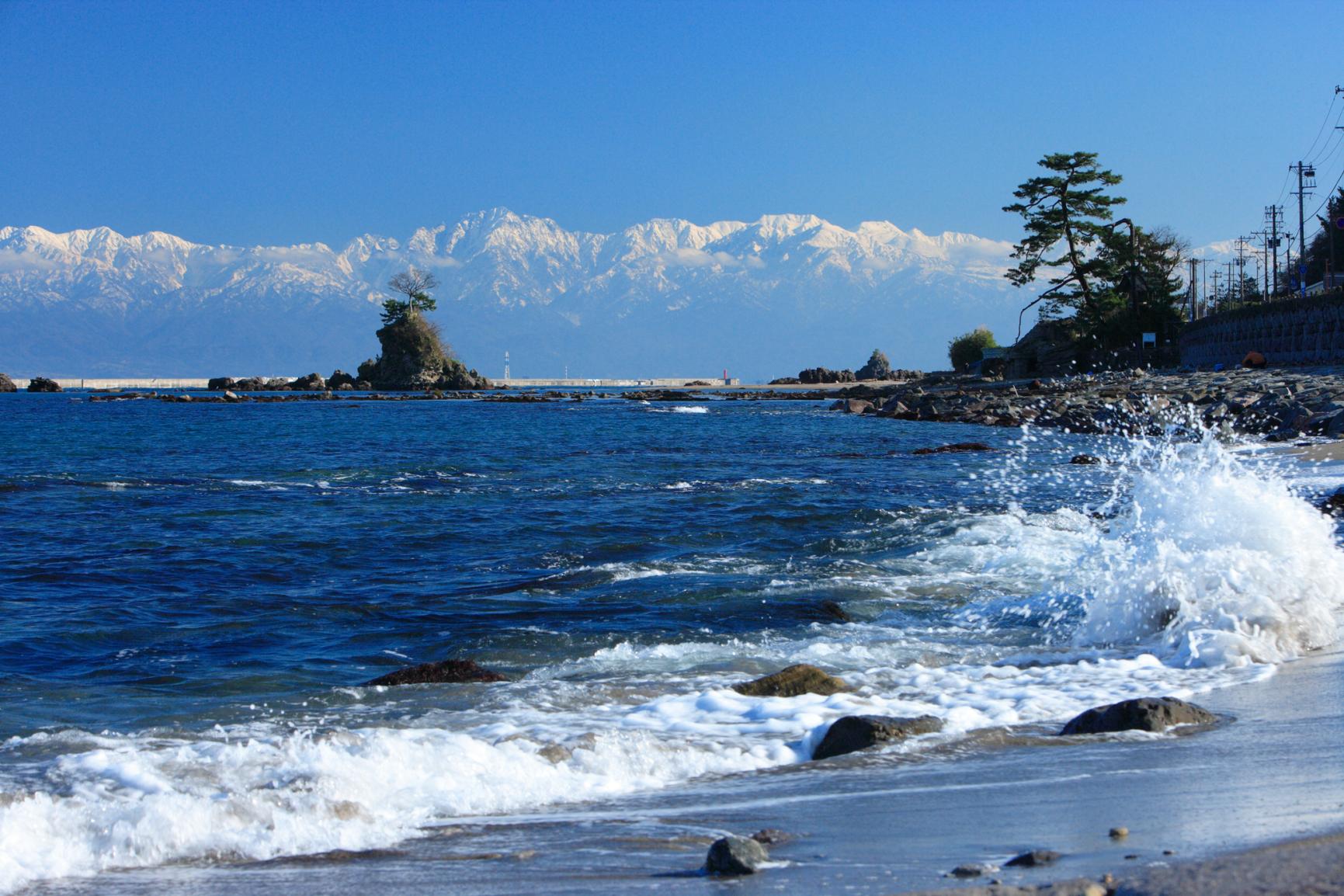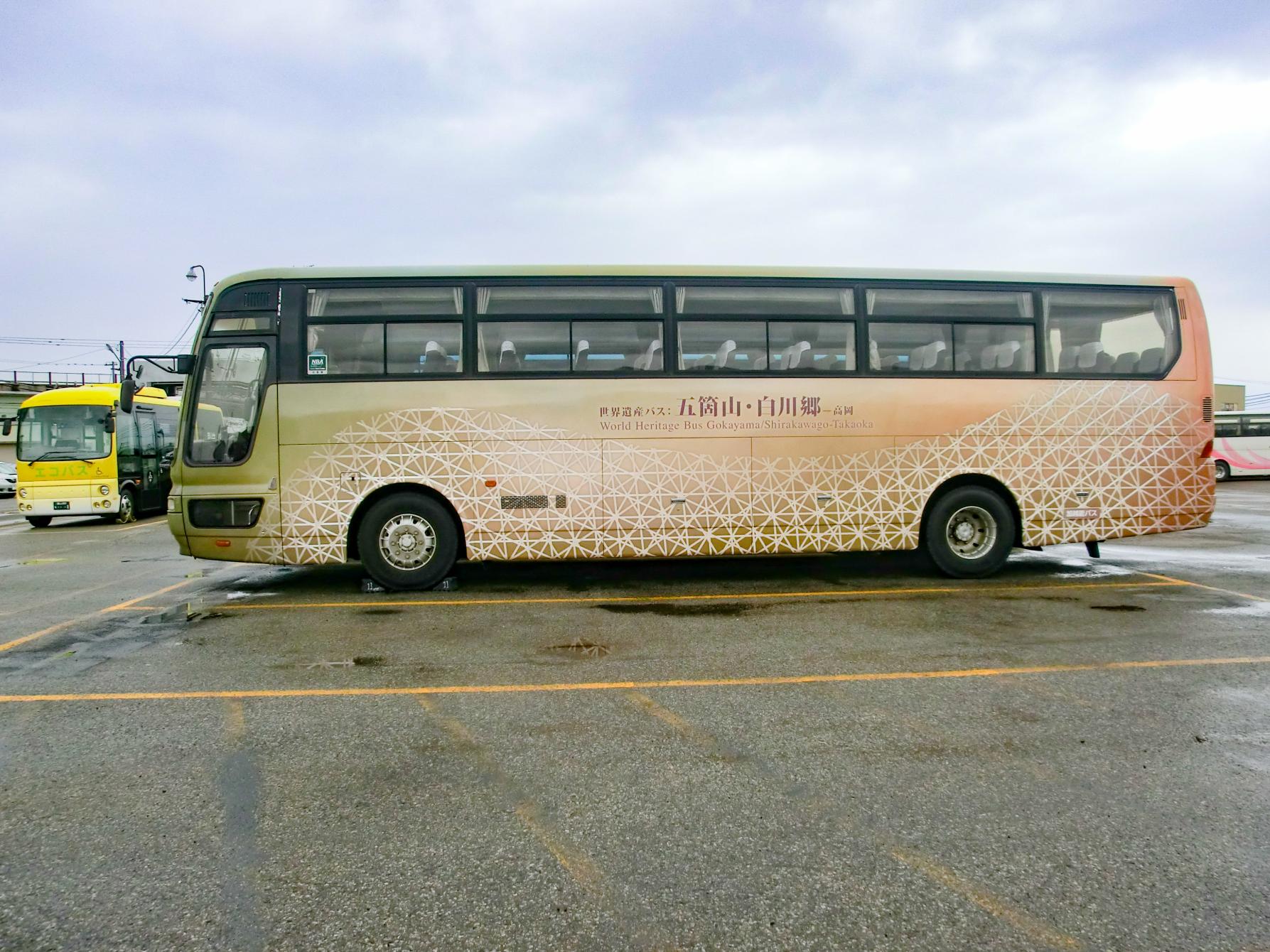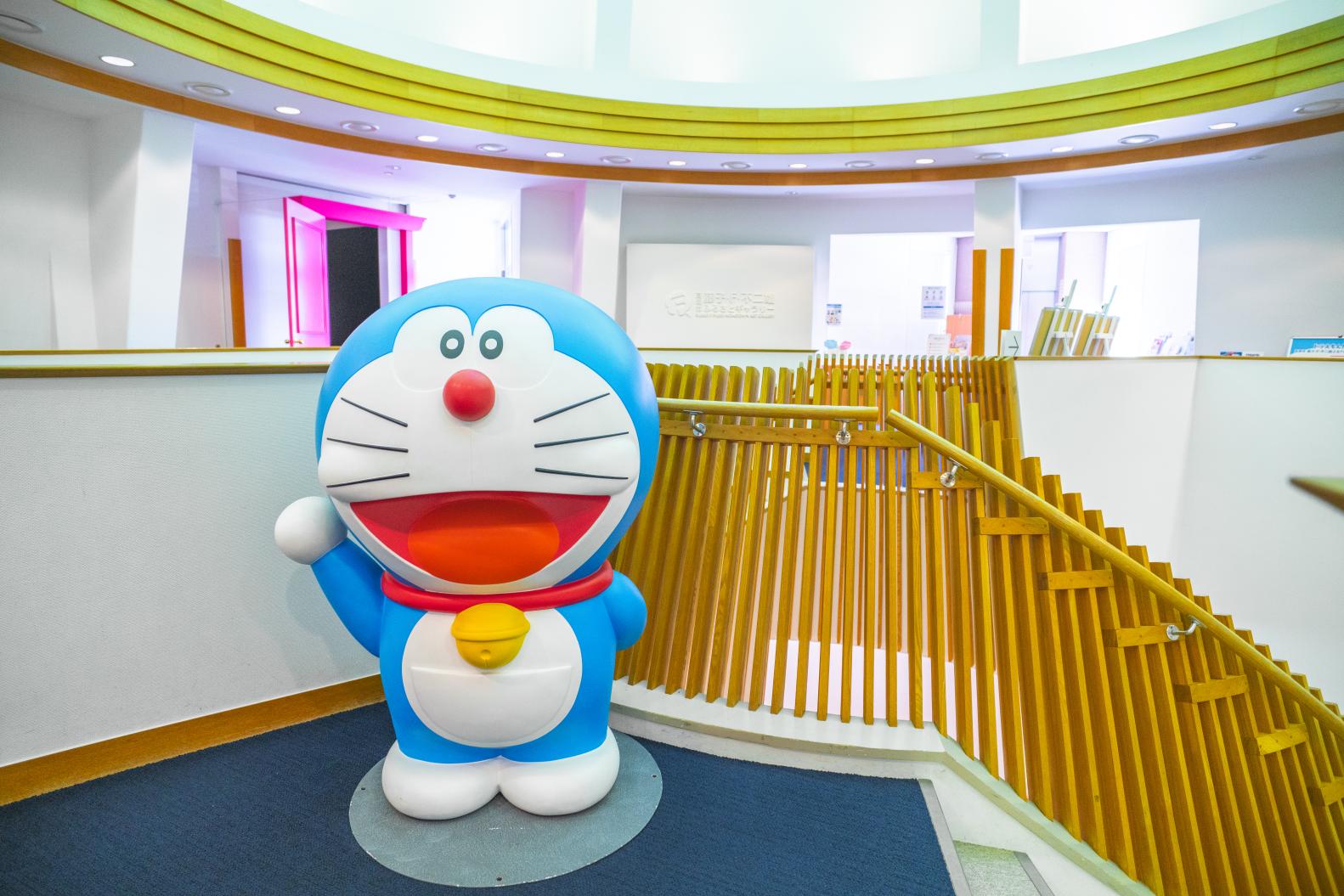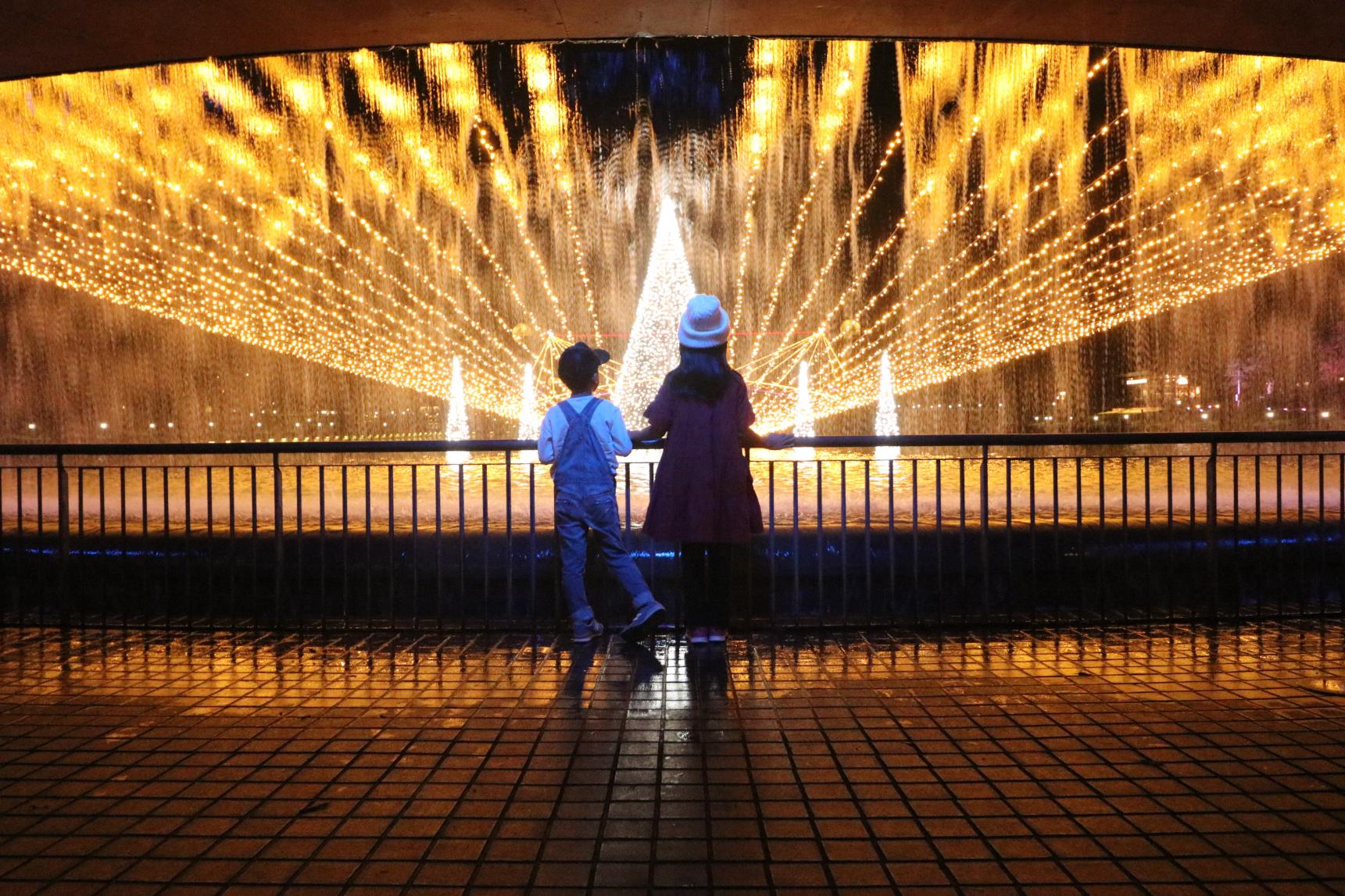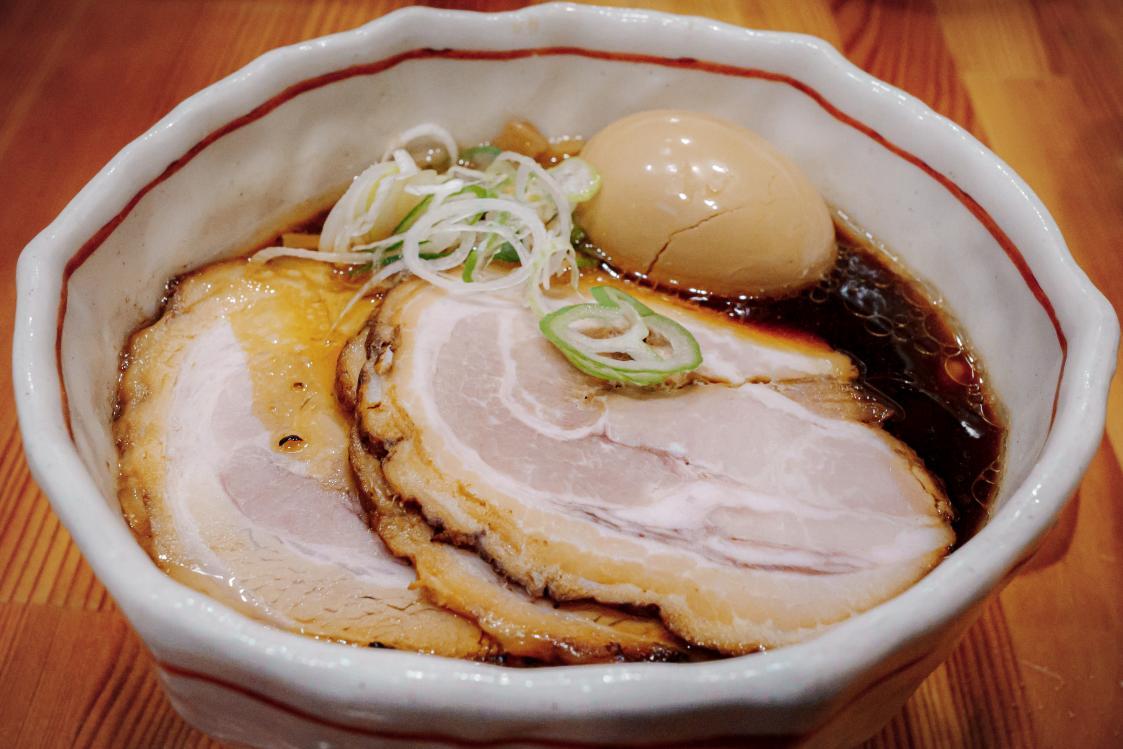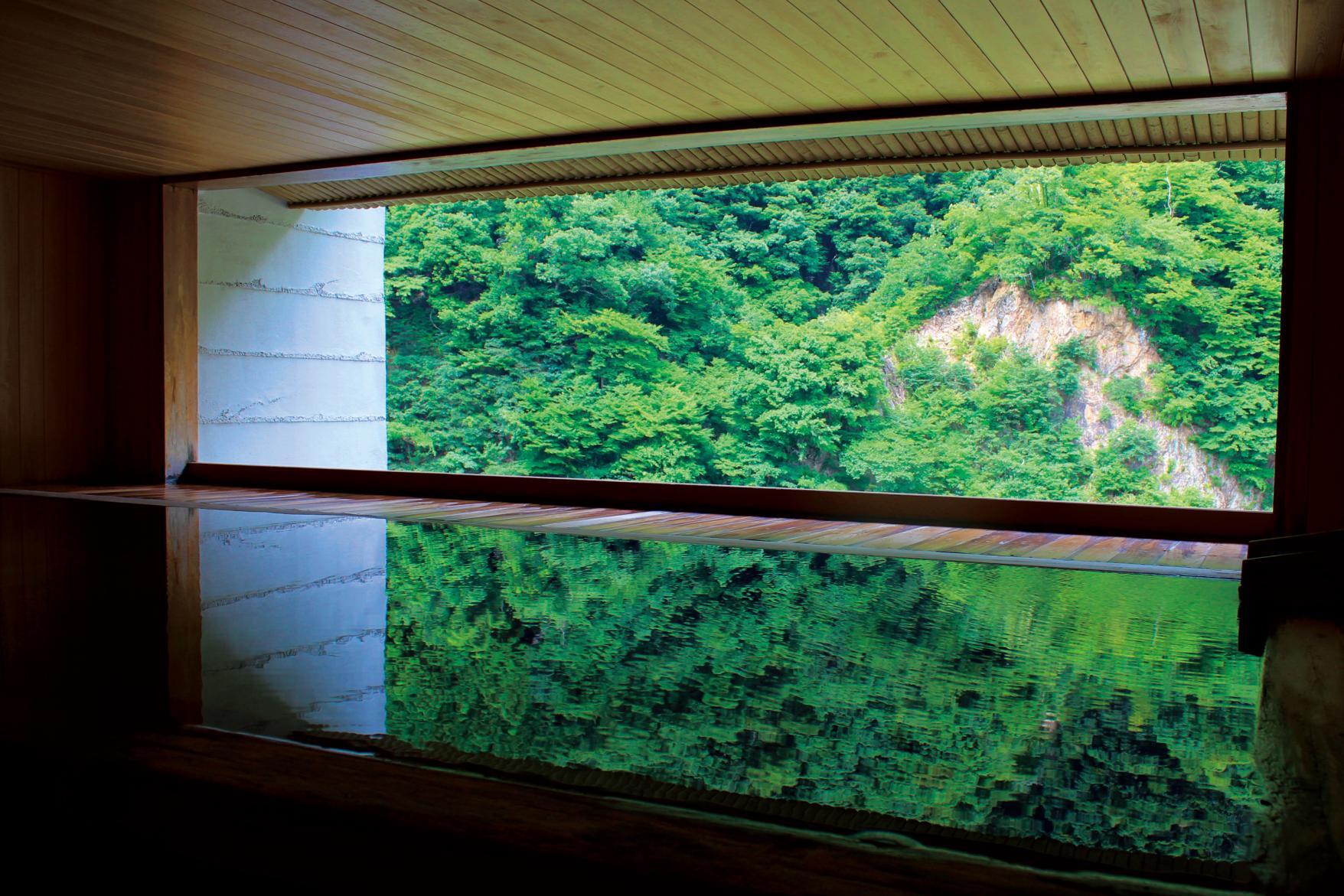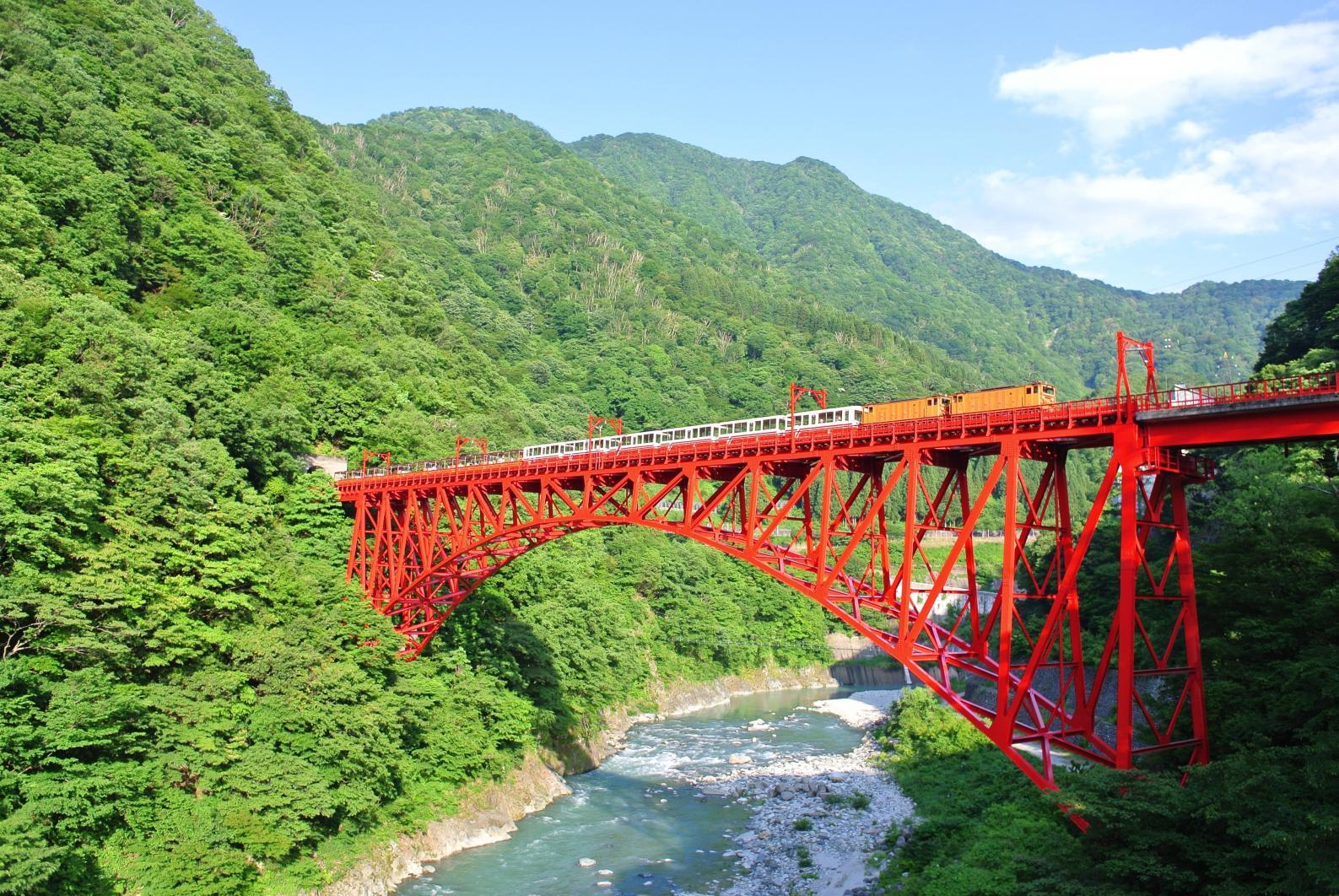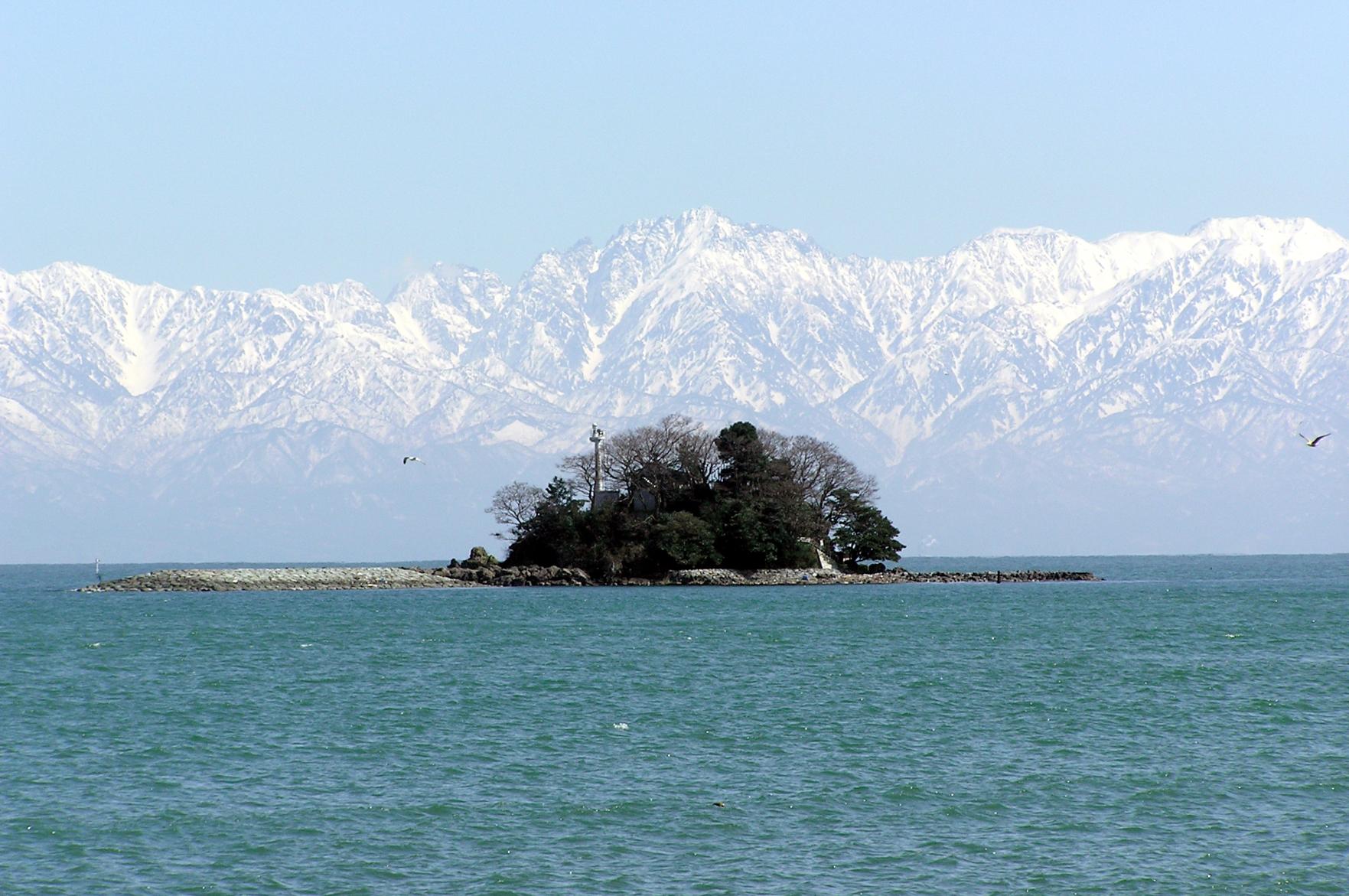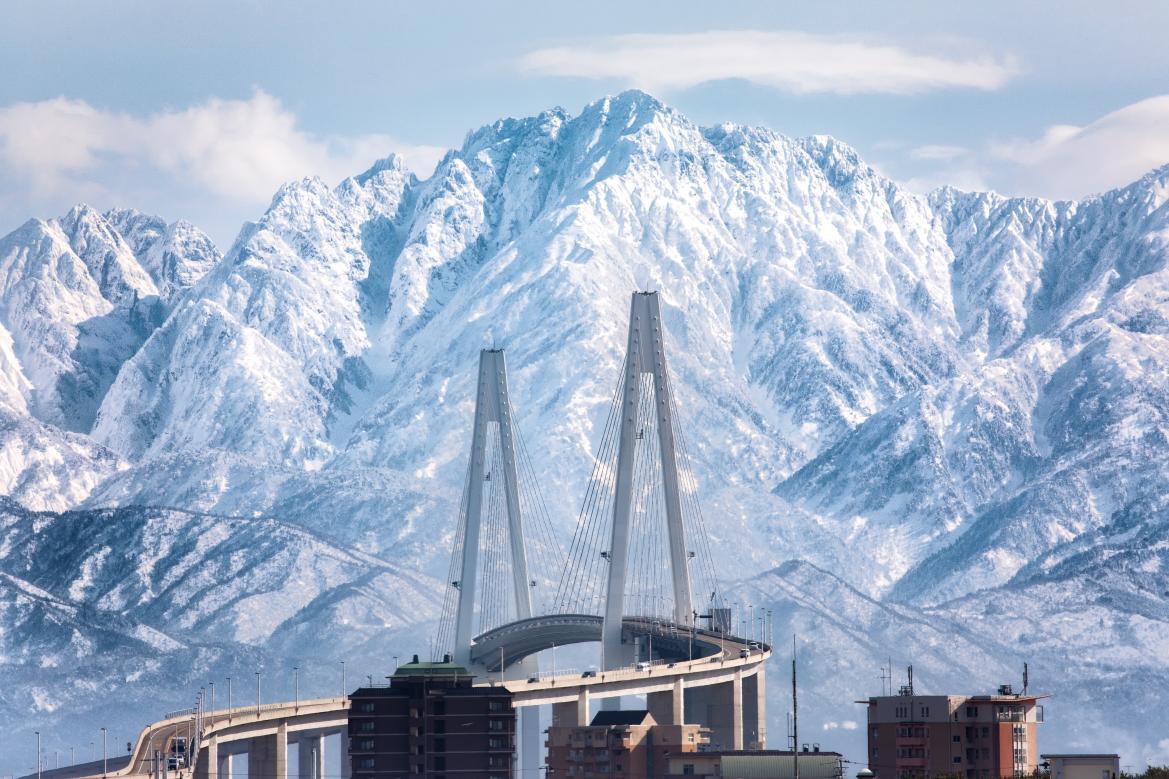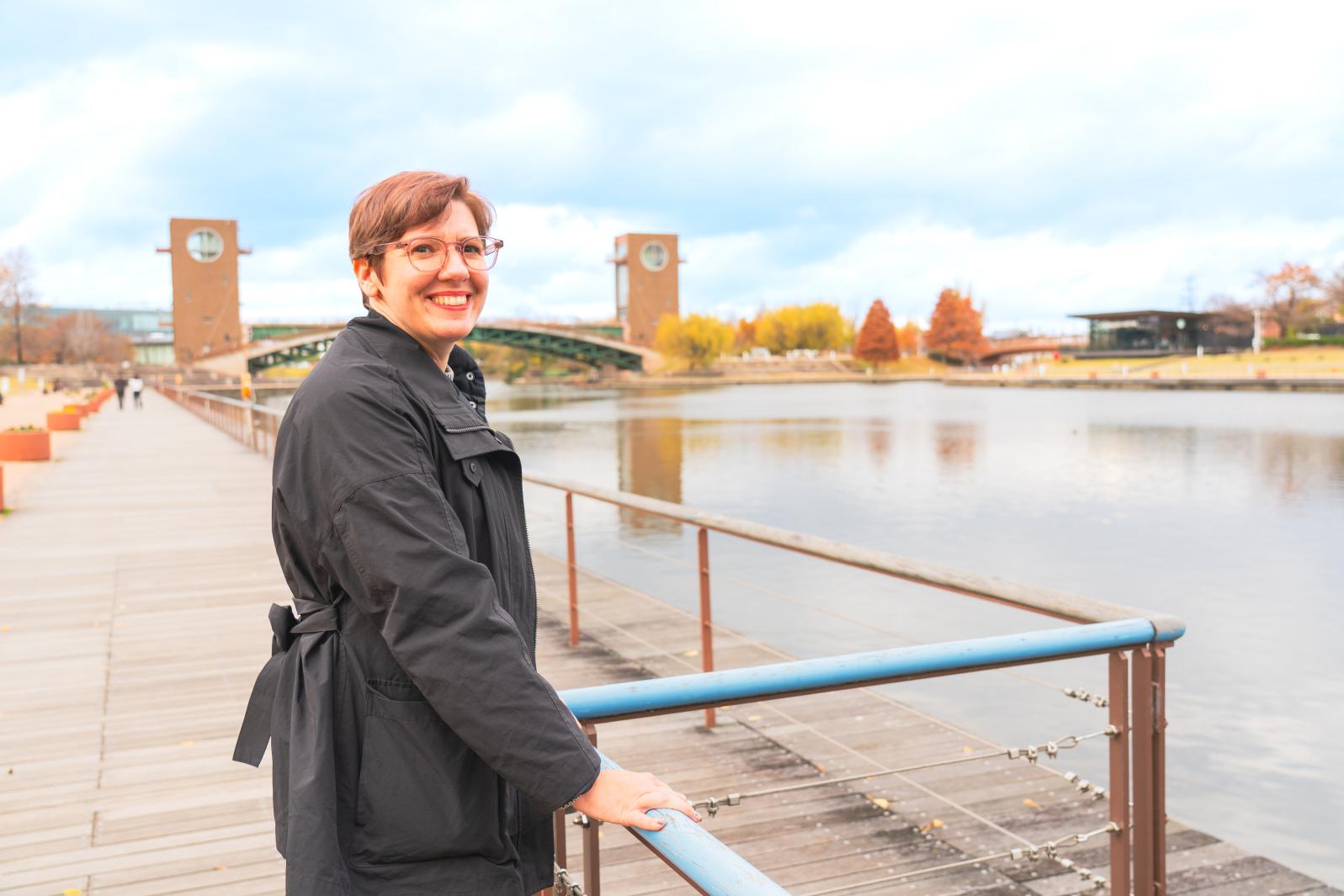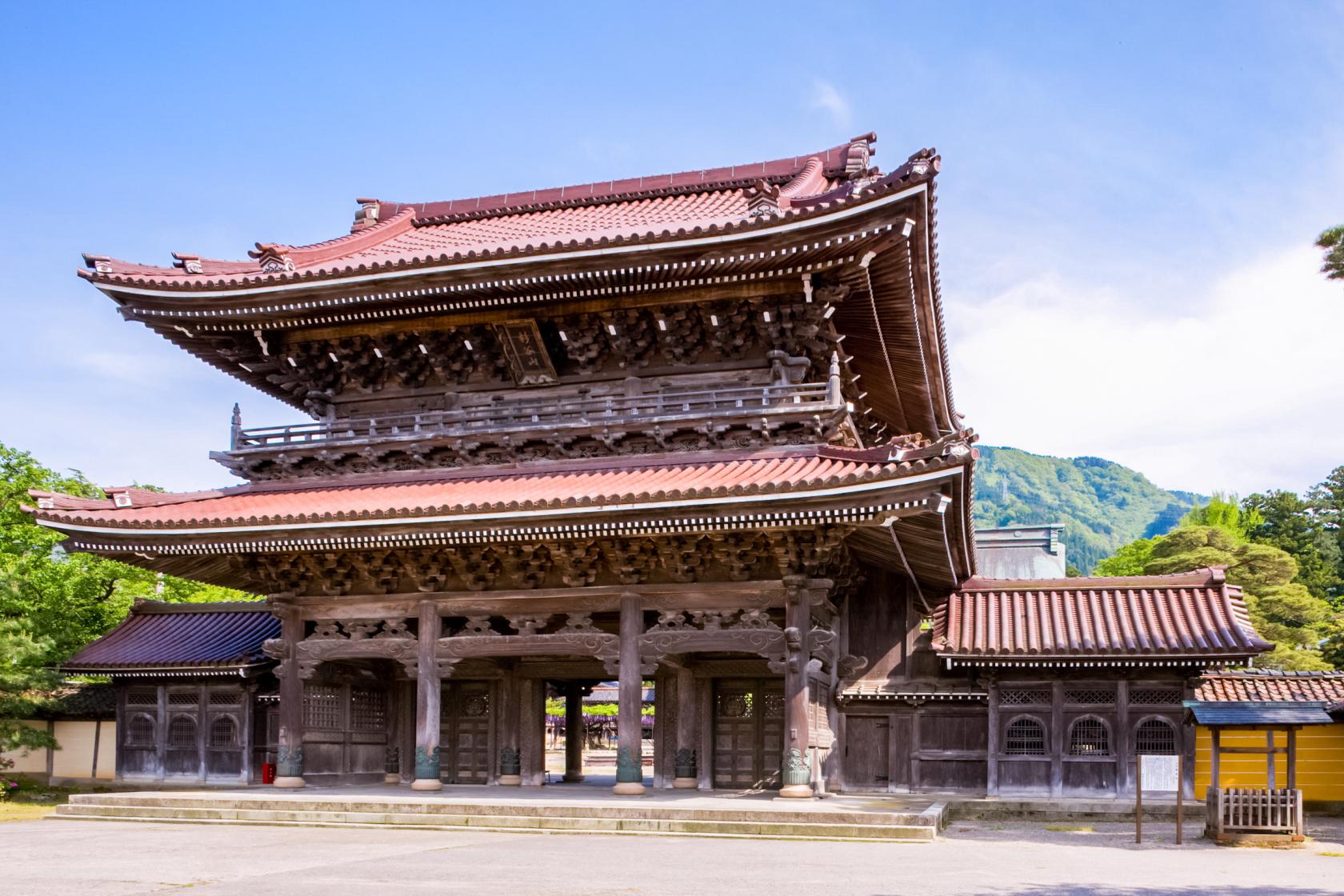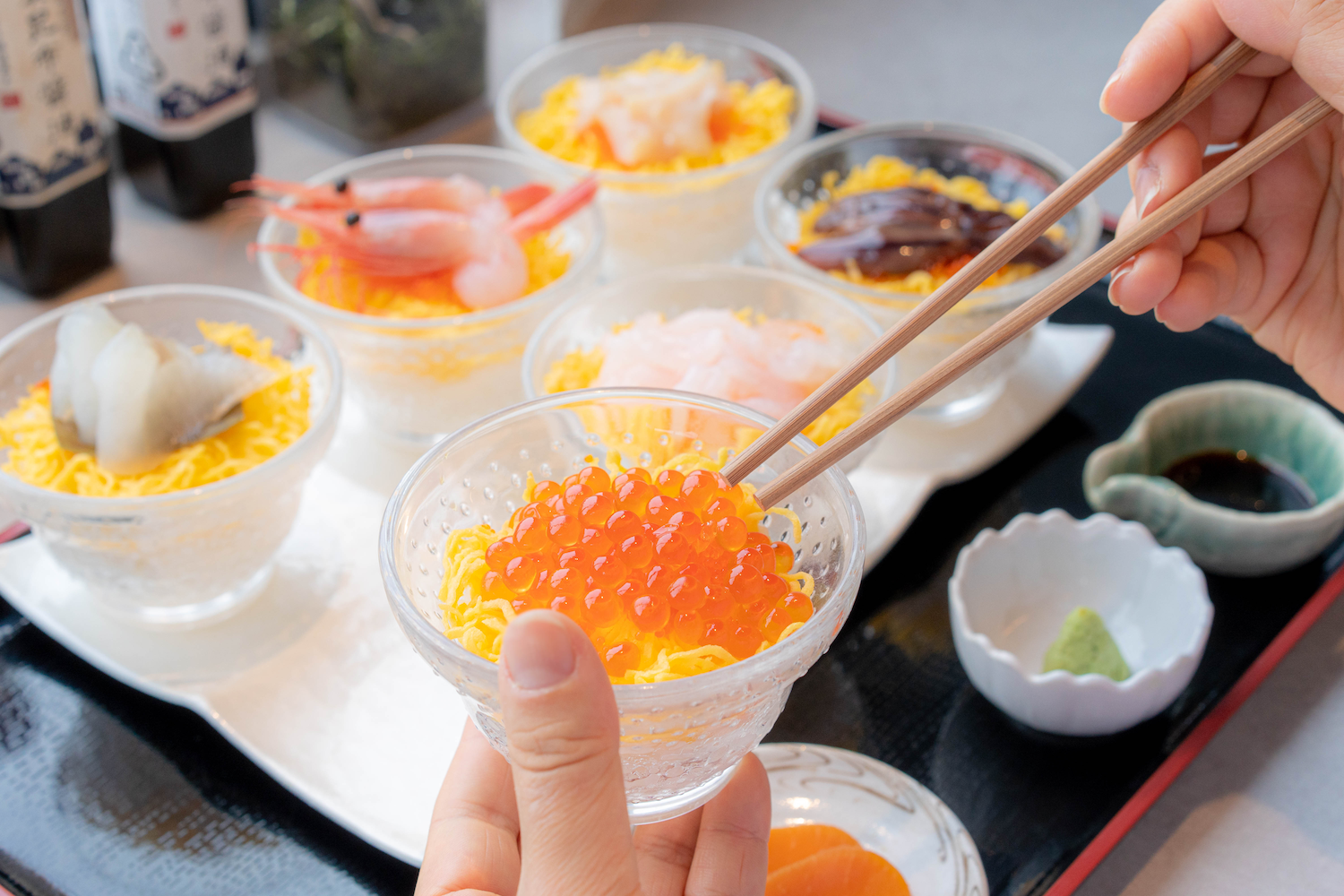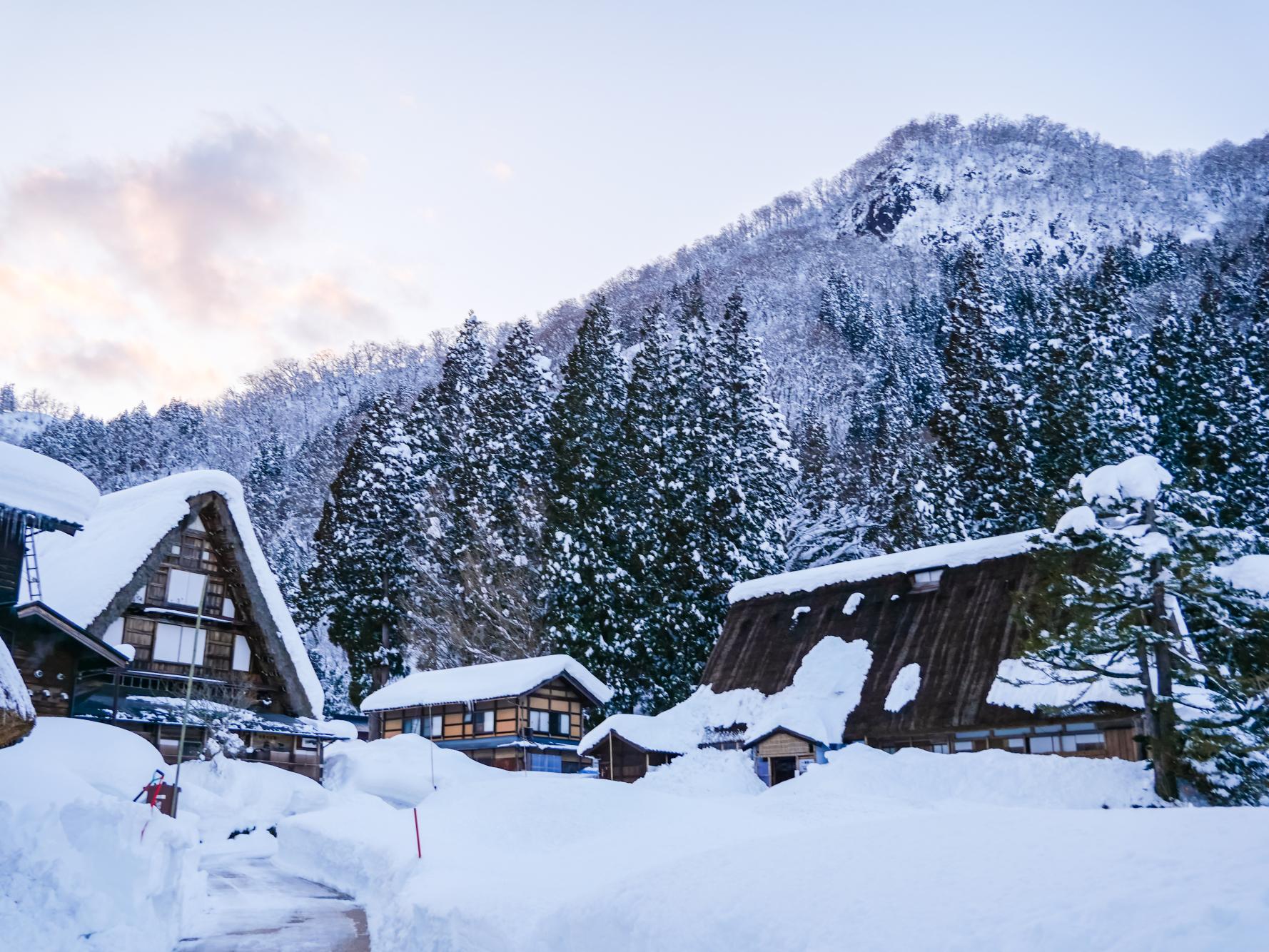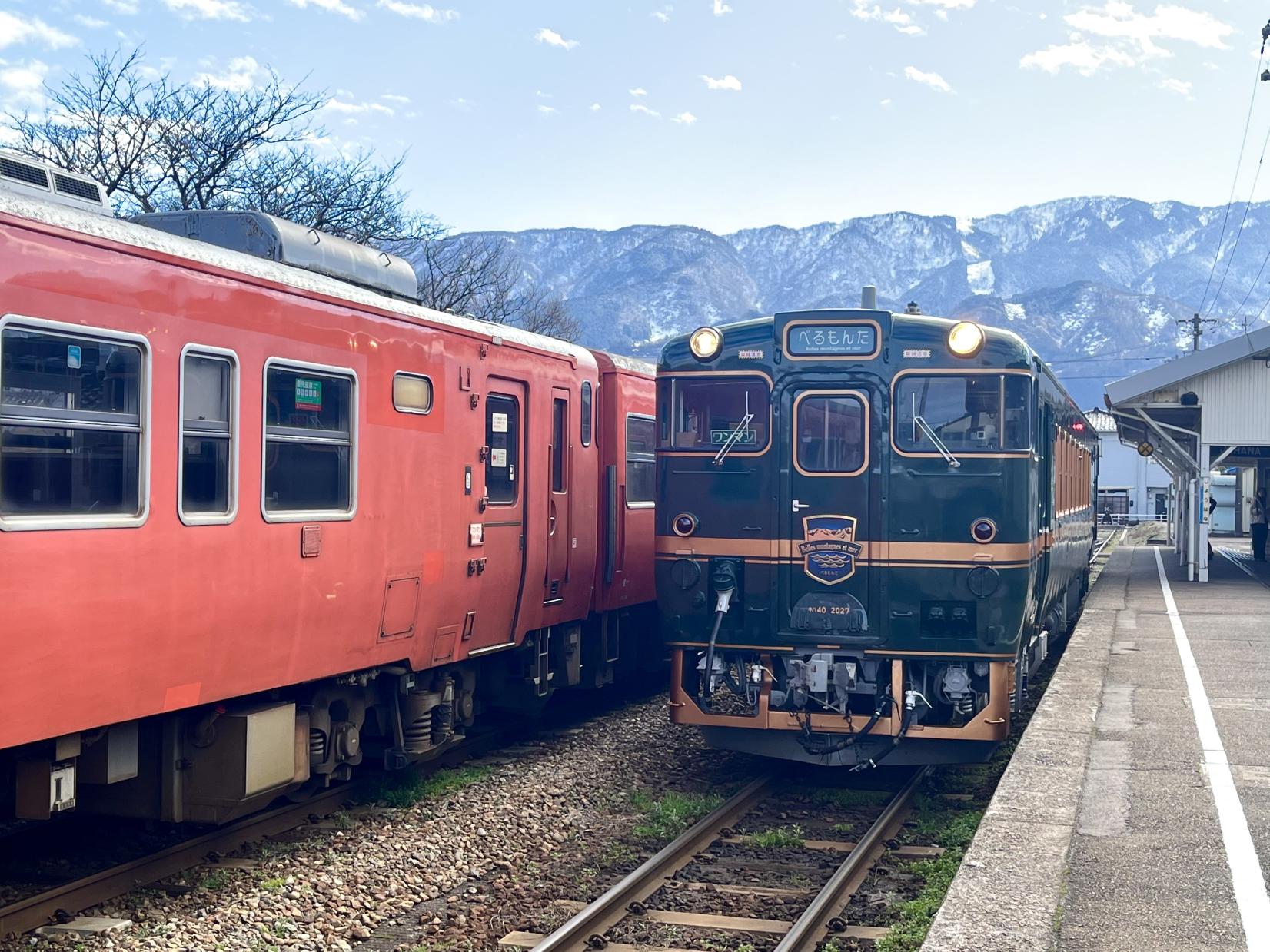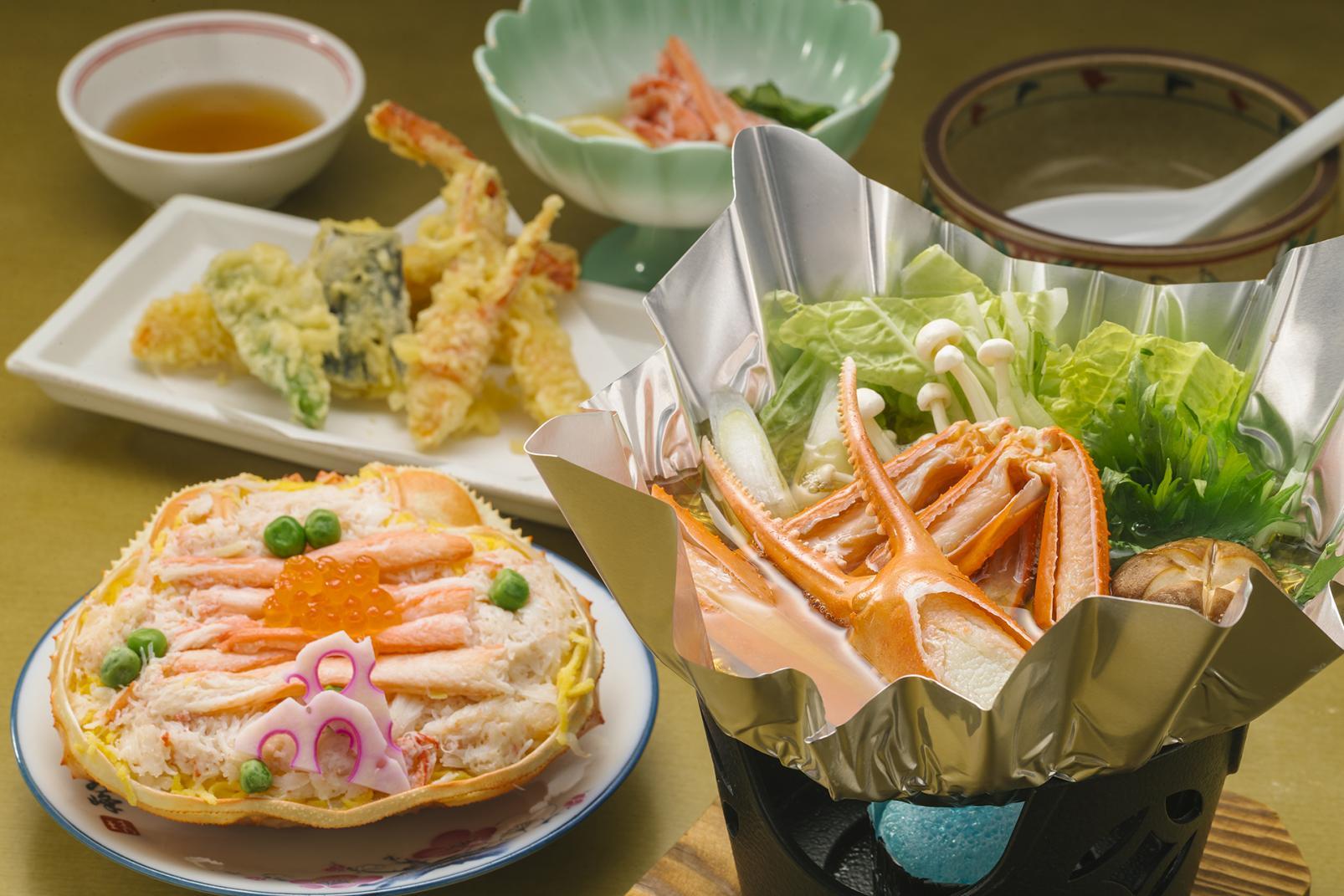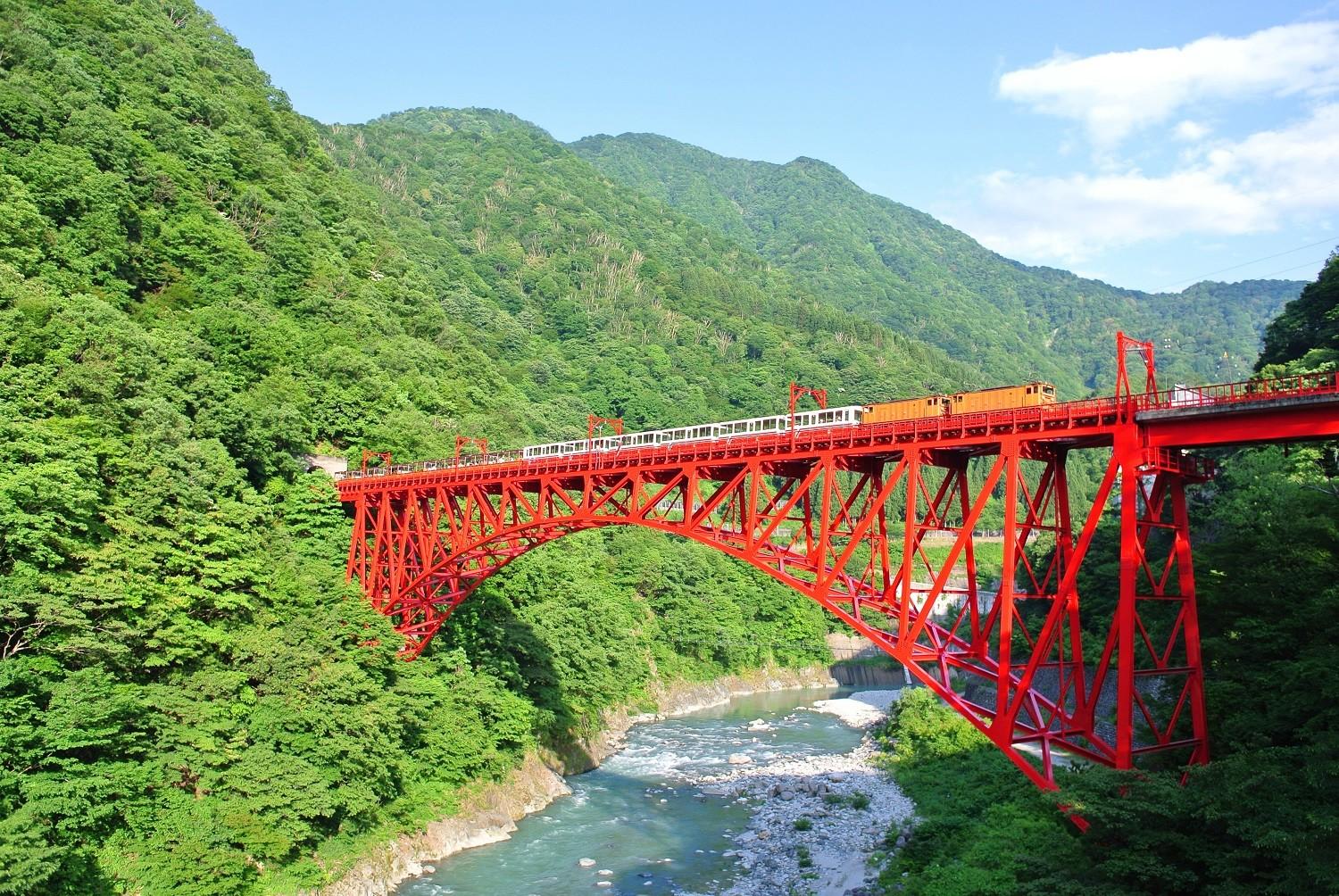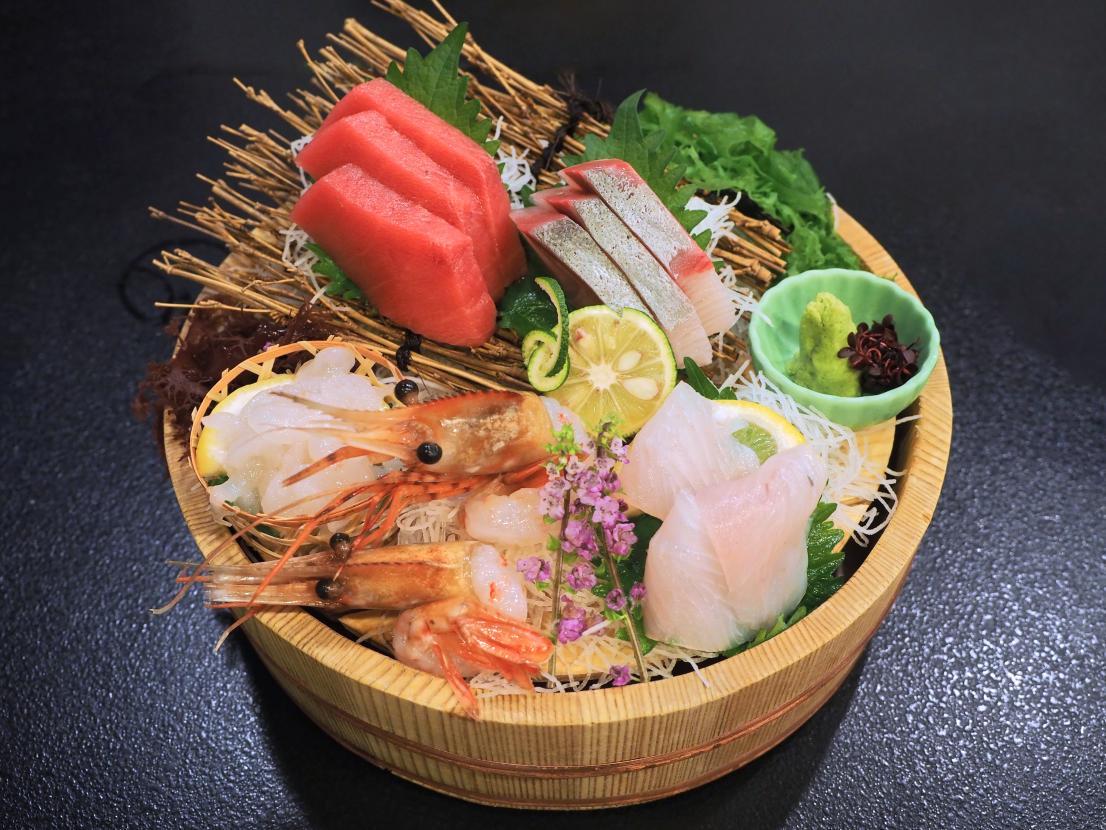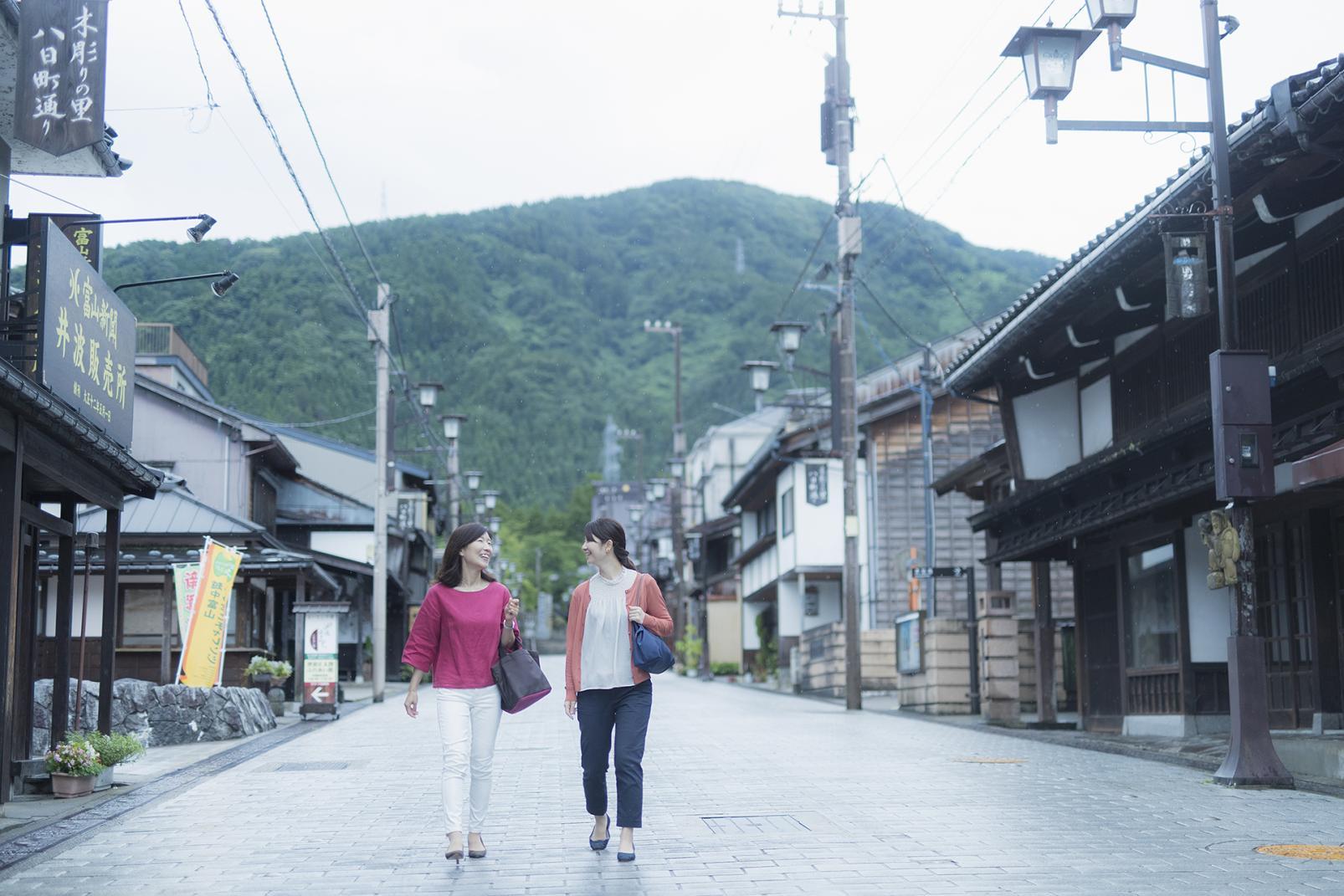
Walk Along the Historic Zuisenji Temple and Yokamachi Dori (Inami, Nanto City)
Inami, a Town of Wood Carvings, Born Along with the History of Zuisenji Temple
Inami, in Nanto City, is a small town located in the southwestern part of Toyama Prefecture, and in 2018, it was designated as a Japanese heritage site as "Inami: A Wood Carving Art Gallery Born from the Temple Carver’s Chisel.'' The history of Inami woodcarving goes back 250 years. It is said that the temple carpenters who were dispatched from Kyoto to build Inami Betsuin Zuisenji Temple passed on the techniques to local people, resulting in its development. Currently, about 200 carvers live in Inami, mainly on Yokamachi Dori, which leads to Zuisenji Temple, and here they protect their craft.
Access
●Via train to Takaoka
From Takaoka Station on the Hokuriku Shinkansen Line or Takaoka Station on the Ainokaze Toyama Railway, take the World Heritage Bus (Kaetsuno Bus) or the Shogawa Komakientei Line for about 70 minutes and get off at "Inami Chuo” bus stop.
●Via the JR Johana Line
Take the Nanto City Bus (Nan Bus) from Fukuno Station, Fukumitsu Station, or Johana Station, and get off at “Zuisenji-mae Kotsu Hiroba.”
*Closed on Saturdays, Sundays, and holidays
●Via Car from Toyama Kitokito Airport
Use the expressway from Toyama IC (Toyama Interchange) on the Hokuriku Expressway, and get off at the Tonami IC. Then, take the local road and arrive in about 15 minutes.<Nearby Parking>
・Inami Kotsu Hiroba Parking Lot (Available from 8:30 am to 4:30 pm)
Normal Cars: 210 yen
●Via bus from Kanazawa Station
From Kanazawa Station on the JR Hokuriku Main Line, take the Kaetsuno Railway on Nanto Kanazawa Line for about 90 minutes and get off at the "Kotsu Hiroba” bus stop.
Bringing Together the Delicate Techniques of Inami Carving
The temple’s current main hall was built in 1885 and is one of the largest wooden temple buildings in the Hokuriku region. The Taishido Hall, on the other hand, was completed in 1918 to become one of the largest wooden buildings in Japan. The Taishido Hall particularly demonstrates the excellent skills of Inami carpenters and carvers. Among its various components, the elaborate "tabasami" supporting the roof, said to have been carved from a single piece of wood, stands out.
The temple’s main gate (Sanmon Gate), standing at 17 meters high and 20 meters wide, is made entirely of zelkova wood that has been wonderfully carved with dragons and heavenly maidens. Even the signs pointing visitors to fire hydrants and restrooms in the temple complex are the works of Inami wood carvers.
Bringing Together the Delicate Techniques of Inami Carving
The temple’s current main hall was built in 1885 and is one of the largest wooden temple buildings in the Hokuriku region. The Taishido Hall, on the other hand, was completed in 1918 to become one of the largest wooden buildings in Japan. The Taishido Hall particularly demonstrates the excellent skills of Inami carpenters and carvers. Among its various components, the elaborate "tabasami" supporting the roof, said to have been carved from a single piece of wood, stands out.
The temple’s main gate (Sanmon Gate), standing at 17 meters high and 20 meters wide, is made entirely of zelkova wood that has been wonderfully carved with dragons and heavenly maidens. Even the signs pointing visitors to fire hydrants and restrooms in the temple complex are the works of Inami wood carvers.
Conveying the Charms of Inami in Front of the Zuisenji Temple Gate
"Teramachi General Store," located in front of Zuisenji Temple’s main gate (Sanmon Gate), sells products that show the charms of Zuisenji Temple and Inami’s wood carving. Accessories with wooden beads are handmade by Inami carvers using old trees from Zuisenji Temple (orders required). There’s also a picture book that introduces the history of Zuisenji Temple in an easy-to-understand manner, and tenugui towels designed with the pattern of Shakunyo Shonin’s robes. They also serve take-out coffee brewed using beans from a nearby roaster.
Yokamachi Dori Stretches Before the Gate
Yokamachi Dori, which stretches in front of the gates of Zuisenji Temple, is lined with carving workshops, breweries, and souvenir shops, and the townhouses with lattice doors and cobblestone streets create a quaint scenery. We recommend taking a leisurely walk while checking out the shops scattered about. The entire town is decorated with wooden carvings unique to the town, such as carved wooden zodiac animals and nameplates on the eaves, and wooden signboards and carved wooden bus stops on the streets.
Walk Down the Street Looking for a Carved Wooden Cat
On Yokamachi Dori, you’ll find carved wooden cats relaxing in various places, such as under eaves and by windows. They are, of course, the works of Inami carvers as well. Each of the cats is unique, with one pouring a drink as another takes a nap. Maps showing where all the carved wooden cats are can be found at various places and shops on Yokamachi Dori, so you can have fun walking around looking for them. As there are about 30 cats, try to find as many as you can!
Visit the Carver’s Workshop to See the Production Process and Find Souvenirs
There are many carver’s workshops on Yokamachi Dori that you can tour. "To,” which is located near Zuisenji Temple, is the workshop of the carver To Ikeda, and it is filled with the aroma of wood. The workshop can be found in the back of the space where his works are exhibited and sold, and here he uses 200 to 300 chisels to carve wood.
"Wood carving in the Inami technique consists of using only chisels, without relying on other tools, to create a glossy finish,” says Ikeda. He creates many works with animal and plant motifs, and he says he often uses his cat as a model.
Column
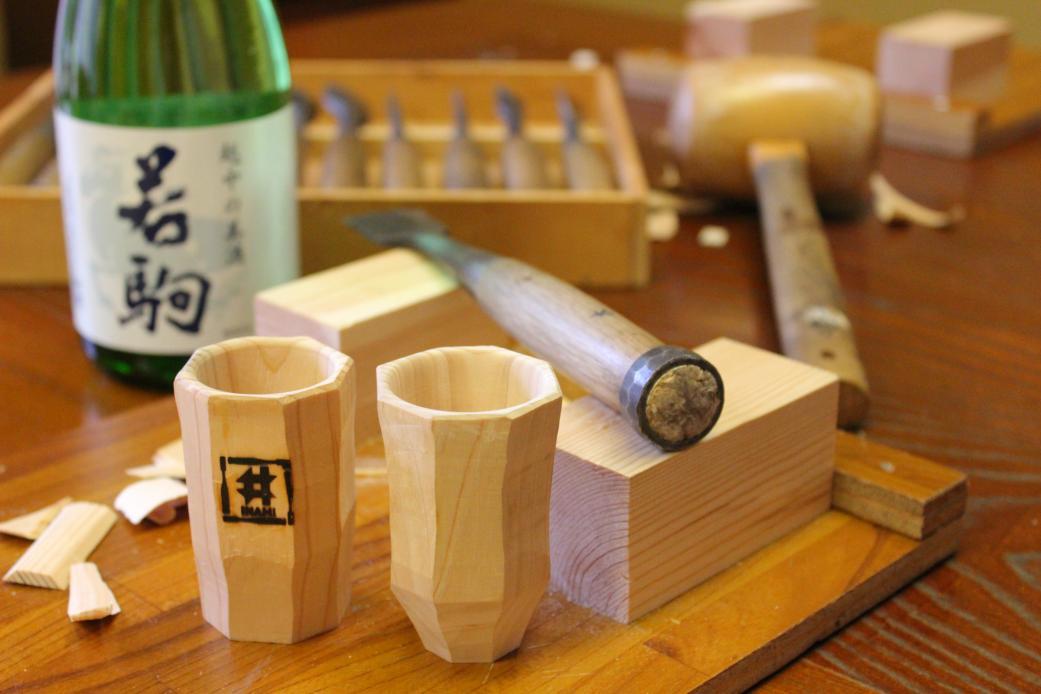
Wood Carving Experience
Inami offers wood carving experiences where visitors can try their hand at wood carving under the guidance of an Inami carver. The experience involves making a sake cup from cypress by carving the wood with a chisel and a mallet. Visitors can even take the sake cups they made to Wakakoma Sake Brewery, also on Yokamachi Dori, and have a taste of the local sake.
See MoreGrab a Bite in Front of Zuisenji Temple
There are several restaurants on and around Yokamachi Dori where you can stop by for lunch. Matsuya, established in 1912, is known for its tempura of seasonal wild and common vegetables, which are served in sets with hand-pulled soba noodles.
It is housed in a 160-year-old renovated private house with Japanese-style wooden latticed windows, allowing customers to enjoy their meal while watching the people passing by on Yokamachi Dori. The owner is self-taught in the art of hand-pulled soba noodles and makes three types: sarashina, nihachi, and inaka.
Get a Souvenir Boasting Flavors Nurtured by Inami’s Climate
Inaka Manju from “Inaka Manju Yoshimura” is a standard souvenir in Inami which will soon be celebrating 60 years since its release. Reflecting the appearance of the first snowfall on the mountains, the thin white dough reveals a generous amount of sweet bean paste wrapped inside.
Mr. Yoshimura, the third-generation owner who created the Inami Manju, says, "To make it mildly sweet, we use only rock candy to cook the azuki beans.” Tea is also served to those who dine at the shop. The shop is decorated with unique sculptures such as a three-dimensional sculpture and Karakuri puppets.
Column
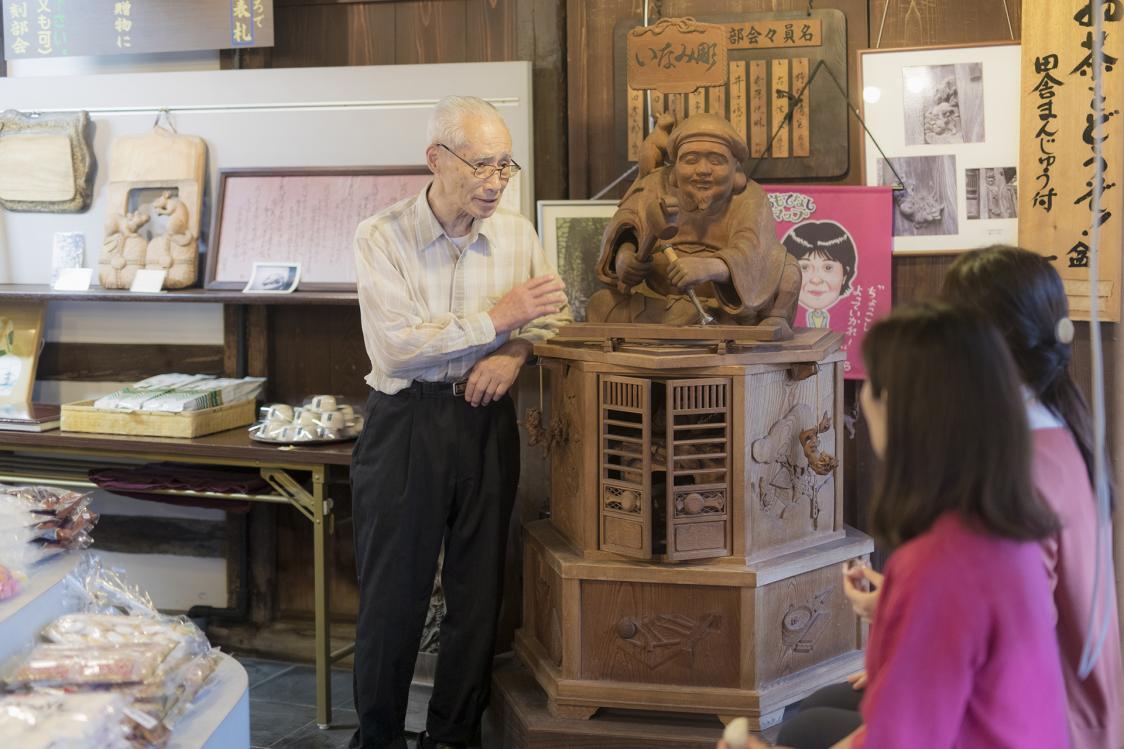
“Inaka Manju Yoshimura,” Where You Can Meet the Famous Shop Owner
The third-generation owner, Kenji Yoshimura, tells the story behind the creation of his prized "Inaka Manju” in a lively and masterful tone. Many regular customers come to enjoy talking with him. Tourists will surely enjoy conversing with the locals as well, and it will be a memorable part of their trip.
Let's Go Check Out Nearby Sightseeing Spots
How was your trip to Zuisenji Temple and Yokamachi Dori in the Inami area? If you go a little further from the Inami area, you will also find other wonderful sightseeing spots, such as the World Heritage Site, Gokayama Village, and Shogawa Gorge (which can be toured by cruise).
-
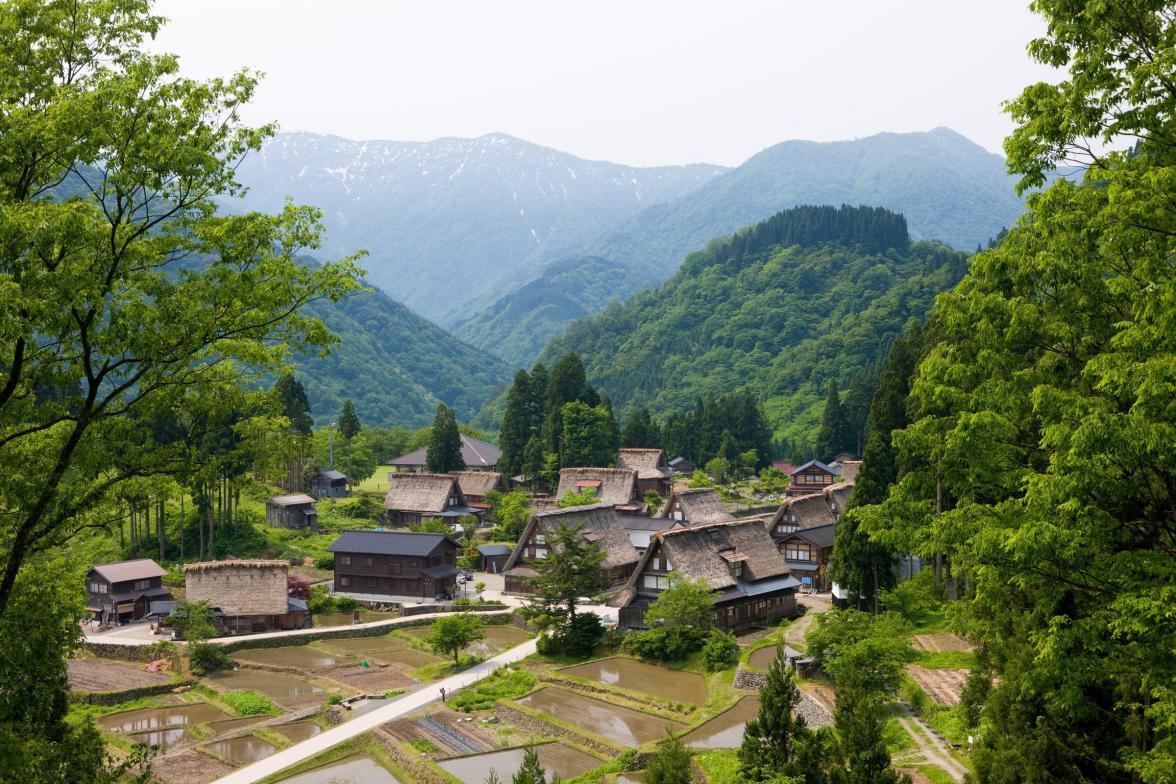
Gokayama Village
Gokayama is a World Heritage Site with a peaceful mountain village landscape. The small village is lined with Gassho-style buildings, rice fields, stone walls, and snow forests that protect the village from avalanches, all of which have remained pretty much as they were in the past
-
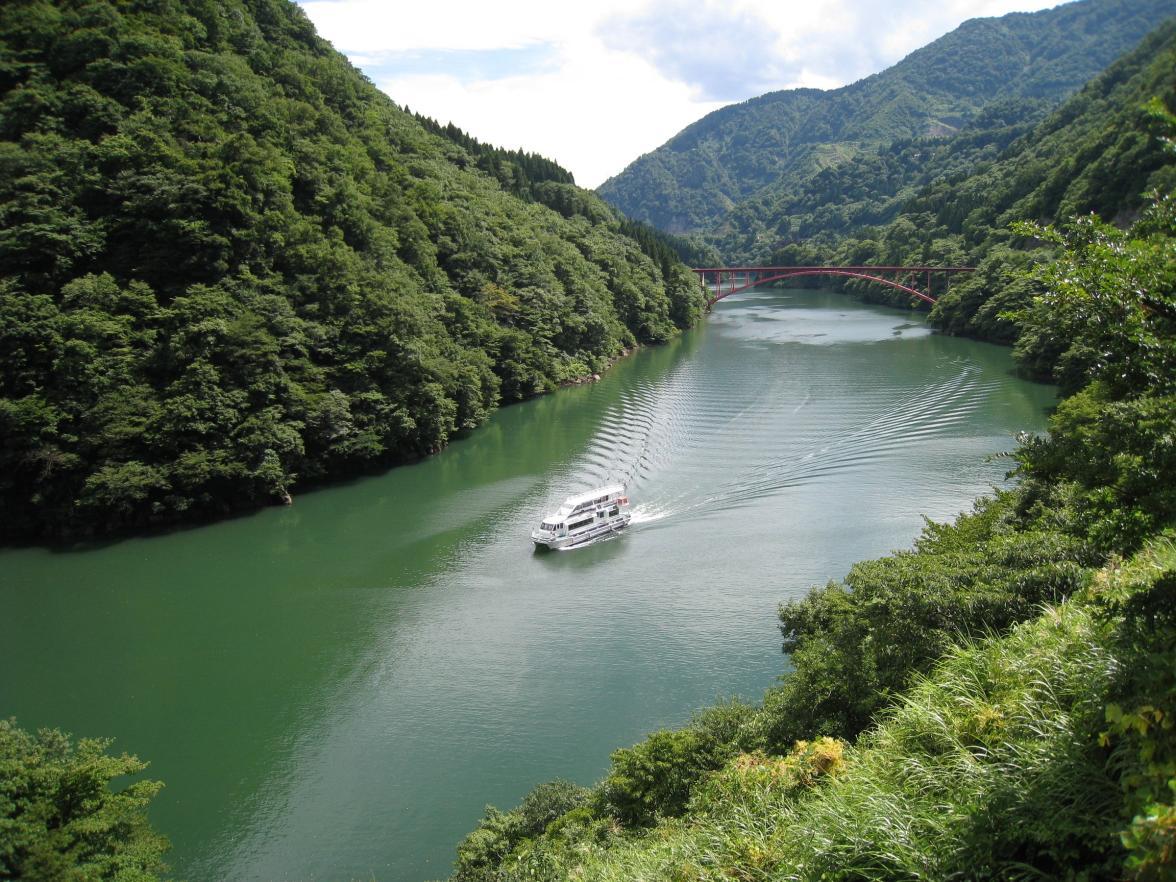
The Shogawa Gorge Cruise
The "Shogawa Gorge Cruise" operates through beautiful scenery surrounded by nature. At Shogawa Gorge, you can enjoy seasonal scenery, such as fresh greenery, bright autumn leaves, and snowy scenery that looks like an ink painting.



